|
"It’s Halloween and time to celebrate! I’ve compiled some tasty "hallowines" from past articles and a few spine-tingling stories to share on this spooky but fun holiday! Flora Springs Flora Springs is a family-run winery in Napa Valley, CA, founded in 1978 by Jerry and Flora Komes. Today, their son John and daughter Julie are the the estate proprietors, and Julie’s husband, Pat Garvey, is the vineyard director and proprietor. The property is situated among vineyards planted in the late 1800s, now part of the estate vineyards. When the Komes bought the estate, it came with a “Ghost Winery.” originally constructed in 1885. “Ghost Winery” is a term used to describe any winery between 1860 and 1900 that was non-functional and in disrepair in the early 20th century due to the Great Depression, phylloxera, and Prohibition. According to Flora Springs, “Before 1919, when Prohibition began, there were an estimated 713 winery businesses in California. Following its repeal 14 years later, only 40 wineries were left. This resulted in a wave of abandoned wineries throughout the next several decades. Many wineries of the time disappeared forever; others were left in ruins.” After his parents bought the property, John completely renovated the old stone winery into a home and lives there with his wife, Carrie. Ghost Winery Malbec 2019 This wine is 100% Malbec and aged 18 months in French (75%) and American (25%) oak barrels. Nose: Plum, cherry, berries, baking spice, and figs Palate: Lush dark berries, black plum, cocoa, fig, spice, silky tannins, and a long finish. Flora Springs says, “It’s hauntingly delicious.” Alcohol: 14.2% Pairing Suggestions: Stews, hearty soups, grilled meat, seared tuna, or aged cheese. In addition to the Ghost Winery Malbec, Flora Springs produces a one-of-a-kind Halloween-themed label and limited edition wine. Every year since 2008, consumers look forward to these whimsical Halloween wine bottles. For the 2019 bottle, general manager and third-generation Nat Komes collaborated with New York-based artist Marc Sasso to create the All Hallows’ Eve Cabernet Franc label. The result is an image of witches dancing in the moonlight while brewing a special potion. Hmm, I wonder what that could be! All Hallows’ Eve Cabernet Franc 2019 The grapes for this 100% Cabernet Franc are sourced from a small block of the family’s estate vineyard in Rutherford. It is aged 18 months in French (80%) and American (20%) oak barrels. Nose: Red fruit, baking spice, cherry, and a hint of floral. Palate: Juicy notes of black raspberry, dark cherry, chocolate, spice, and a touch of sour cherry on a long finish. It is a balanced and well-structured wine. Alcohol: 14.2% Pairing Suggestions: Grilled meat, fowl, seared tuna, or a Halloween chocolate treat! Casillero del Diablo Once there was a winemaker named Don Melchor Concha y Toro who founded the Concha y Toro winery in Chile in 1883. He started his winery with grape varieties that he brought back to Chile from the Bordeaux region of France, with which he made exquisite wines. Don Melchor reserved an exclusive batch of these wines for himself that he kept under lock and key. According to legend, these wines continually disappeared from the cellar. So to stop the theft of these wines, Don Melchor spread a rumor that the devil himself lived in the cellar guarding the wines. Everyone became terrified, and some claimed that they had seen the devil. The rumor worked, the thefts stopped, and Don Melchor continued to enjoy his wines. To this day, the cellar is known as the “The Devil’s Cellar” and remains protected…forever! Casillero del Diablo, which means “devil’s locker” in Spanish, is a legendary brand that is part of Concha y Toro’s portfolio with the “devil” logo on every bottle. The cellar is located in Pirque, close to Santiago, and is open for tours. Here are two wines from Casillero del Diablo to add devilish fun to your Halloween. Casillero del Diablo Reserva Red Blend DO The grapes for this red wine are a mysterious blend of Syrah and Cabernet Sauvignon sourced from Rapel Valley. The wine is shrouded in secrecy about its length of aging, but rumor has it that it spent about ten months in French oak. But there is no mystery as to this wine’s aromas and taste! Nose: Dark berries, black cherry, fig, spice, and vanilla Palate: Juicy plum, dark cherry, spice, dark chocolate, and soft tannins Alcohol: 13.5% Pairing Suggestions: Grilled meat, game, seared tuna, hearty stews, and pasta. Casillero del Diablo Reserva Cabernet Sauvignon The grapes for this wine are sourced from Central Valley DO. Its aging remains a secret closely guarded by the devil in the cellar! Nose: Intense aromas of dark berries, cherries, plum, floral, and spice. Palate: Aromas spill onto the palate with a touch of anise. It is beautifully balanced with firm tannins, dark chocolate, and plum lingering on a long finish. Alcohol: 13.5% Pairing Suggestions: Hearty or spicy cuisine, grilled meat, aged cheese, or stews. Sipping Sherry With Halloween Treats Sherry is a fortified wine produced in Andalucía, located in the southwest area of Spain. With over 40,000 hectares of vineyards in Andalucía, more than half of the wine produced here is in DO (denomination de origin) areas. Sherry can only be made from Palomino, Muscatel, and Pedro Ximénez white grapes. To learn about the terroir of Andalucía, how sherry is made, and all the sherry styles available, please click on the link below that will take you to an article on my website. http://thewineknitter.com/1/post/2017/10/day-606-sherry-fest.html Harveys Bristol Cream DO Jerez Xérés Cream Sherry is usually a blend of Oloroso, PX (Pedro Ximénez), or Moscatel styles but can be made in various styles. It is a semi-sweet wine that is aromatic and dark in color with classic notes of nuts and caramel. This cream sherry is a blend of 80% Palomino and 20% Pedro Ximénez grapes. It is a unique combination of Fino, Amontillado, Oloroso, and Pedro Ximénez styles of sherry that have been aged separately in the solera system, averaging seven years of aging. Harveys Bristol Cream is the only sherry made up of a blend of four different styles that exist. This sherry is dark amber with intoxicating aromas of dried fruit, raisins, nuts, and toffee. The palate is layered with raisins, caramel, fig, toasted almonds, and a creamy mouthfeel. This is a nice sherry to drink as an aperitif or serve with desserts, cheese, and fruit. Pour it over ice cream or serve with ice and a twist of orange. It also goes well with pumpkin muffins! Serve well chilled. Alcohol: 17.5% González Byass Alfonso Oloroso DO Jerez Xérés Oloroso (‘scented’ in Spanish) intentionally never develops flor (yeast). Aging through oxidation of up to 40+ years produces a full-bodied, aromatic, dark, and rich wine. Oloroso contains the most amount of alcohol in sherry, with levels of 18% to 20%. This dry sherry is 100% Palomino Fino. The wine is fortified to 18% alcohol and then is aged for an average of eight years in American oak casks following the traditional solera system. Mahogany in color, this dry sherry exudes aromas of nuts and toffee. The palate offers dried figs, salted nuts, especially peanuts, and traces of toffee and vanilla on the finish. Serve chilled. It will pair well with meats, stews, mild cheese, and dark chocolate laden with nuts. Add a splash while cooking soup or sautéing seafood. Alcohol: 18% González Byass Nectar Dulce Pedro Ximénez DO Jerez Xérés Pedro Ximénez (PX) is an intensely sweet wine and is the sweetest of the sherry styles. The grapes are dried in the sun allowing the juices to concentrate before pressing. This sherry is 100% Pedro Ximénez. The wine is fortified to 15% alcohol and then enters the Nectar solera. It is followed by an average of eight years of aging in American oak casks. This dark brown colored sherry emanates intoxicating aromas of raisins, prune, fig and honey. The palate is rich and unctuous, with raisins, baking spice, and toasted notes of caramel, toffee, and espresso. A hint of nuts accompanies a long finish. Enjoy it chilled as a dessert wine on its own or poured over ice cream or berries. Heavenly!
Alcohol: 15% Whether it’s a “Hallowine” or non-alcoholic “spirits” celebration, wishing you a devilishly fun-filled and safe Halloween! Until next time... Cheer! Penina To leave a comment or if you have an inquiry, please contact me at [email protected] Beginning with October and every month to follow, I will feature one wine and a pairing suggestion and recipe from the wine producer or winemaker. To get the ball rolling, I have two winners this month, both from Italy. San Felice Il Grigio Chianti Classico Gran Selezione DOCG 2017 San Felice estate is located in the heart of Chianti Classico in the commune of Castelnuovo Beradenga. With over 140 hectares of vineyards, 80% is devoted to Sangiovese, which is at the heart of their production. Their presence extends to the prestigious terroirs of Montalcino and Bolgheri as well. This wine is made with 80% Sangiovese, sourced from the estate’s top vineyards. The other 20% is a blend of native Tuscan varieties such as Abrusco, Pugnitello, Malvasia Nera, Ciliegiolo, and Mazzese. The wine is aged 24 months, 50% in large 60-100-hectoliter Slavonian oak casks and 50% in 225- and 500-liter French oak barriques. It is then aged in bottle for eight months. Nose: Floral, juicy fruit, sour cherries, smoky wood, herbs, and spice. Palate: A beautiful and expressive wine with notes of plum, dark berries, and spice fused with elegance and subtlety and balanced with lush tannins and acidity. Hints of vanilla and sour cherry linger on a long finish. Alcohol: 13.5% SRP: $38.99 Pairing Suggestions: Wild game, grilled meat, aged cheese, pasta, truffle risotto, or sip with a chocolate dessert. Winemaker Leonardo Bellaccini suggests the following recipe to pair with the wine, prepared by Borgo San Felice Executive Chef Juan Quintero. MACARONI, BEURRE NOISETTE, MUSSELS, LAMB AND ANISE Time: 20 minutes Ingredients for four servings: Sauce 100g (3.5 oz) unsalted butter (for the beurre noisette or brown butter) 120g (4.2 oz) cleaned mussels (without the shell) 100ml (3.38 fl oz) of white wine 4 garlic cloves 2 tablespoons of anise seeds 100 ml (3.38 fl oz) of mussel water Garnish 160g (5.6 oz) Fatless lamb meat (loin) 2 Nori seaweed sheets 50ml (1.6 fl oz) olive oil Black pepper 300g (10.5 oz) High Quality “maccheroncini” (pasta) Preparation Open the mussels in a pan with white wine, garlic, and parsley. Cover, and after a couple of minutes, they will be open. Turn off the heat and remove the shell of the mussels and strain its water, preserving it. Separately melt the butter and let it cook until it turns brown; add the mussel water so the butter doesn’t get burned. Add the anise and the mussels, and turn off the heat. Blend until smooth. There is no need to add salt because the mussel water is salty enough. Cook the pasta in plenty of salted water, drain and then add to the cream of butter. For serving, chop the lamb meat like a classic tartare, then season with salt, oil, and pepper, and cover with nori seaweed. On the base of the plate, arrange the lamb with seaweed, and finally, serve the pasta on top. Donnafugata Floramundi Cerasuolo di Vittoria DOCG 2020 Donnafugata has five estates throughout Sicily, with one in Vittoria located in southeastern Sicily. It is in this special region where Cerasuolo di Vittoria DOCG is produced. It is considered one of the most noteworthy wines produced in Sicily and the only wine in Sicily with a DOCG status! The indigenous grapes Nero d’Avola and Frappato are the only varieties allowed in the blend. Nose: Intense floral aromas envelop the senses with notes of violet, cherry, red berries, and spice that segue onto the palate. Palate: This is a fresh and juicy wine with personality. Hints of rose, strawberry, and spice linger on the finish. Soft tannins and a crisp finish add to the entertainment. Alcohol: 13% SRP: $30 Pairing Suggestions: Mature cheese, risotto, seared tuna, and calamari. Donnafugata suggests pairing the following recipe with Floramundi. Swordfish with Citrus Fruit and Pistachios
Time: 20 minutes Difficulty: Intermediate Ingredients for four servings: 4 swordfish steaks, about 200 g (7 oz) each 1 bunch of wild fennel 2 cloves of garlic 1 chili pepper a handful of sultana raisins, another of pistachios orange juice and rind juice of one lemon 1 glass of white wine 0-type flour, butter Instructions Flour the swordfish steaks. In a slightly buttered pan, sauté the garlic and chili pepper. As soon as the garlic browns, remove it. Add the floured fish and sauté. Then add the white wine, sultana raisins, wild fennel, and minced orange peel. As soon as the wine evaporates, add the orange and lemon juice and a pinch of crushed pistachios. Cover and continue cooking; if necessary, add citrus juice. Serve with the reduced sauce and a handful of pistachios covering the fish, garnishing the platter with two orange slices. Enjoy! Cheers! Penina To leave a comment or if you have an inquiry, please contact me at [email protected] Join me on a road trip to visit four unique wineries along the southeastern stretch of Sicily. It is an expanse of land filled with beautiful landscapes, historic sites, ancient ruins, and distinctive terroir that lured these wineries here. And, of course, there is lots of wine and mouthwatering local cuisine to taste! My last article about Sicily covered Vittoria DOCG, the final stop on my southeastern wine tour. http://thewineknitter.com/the-journal/a-taste-of-vittoria Today, we will go back to the beginning of the tour with Catania as our starting point. The sea to the east and the mountains to the west were a constant companion as we traversed the terrain, making our way south. On our way to Siracusa, we stopped for a seaside lunch at Stravento Ristorante Sul Mare in the hamlet of Brucoli in Augusta by the Ionian Sea. Here is a sampling of the local cuisine we enjoyed. (All slideshow photo credits: Penny Weiss) Having sated our palates, we continued on our journey south to explore a few wineries. Peter Vinding-Diers Montecarubbo Winery Montecarrubo is a small 5-hectare estate situated on the remains of an inactive volcano that exploded approximately two million years ago. It is near the town of Melilli, with breathtaking views overlooking the Ionian Sea and the bay of Augusta, between Catania and Siracusa. Peter and Susie Vinding-Diers came to Sicily seeking unusual and serious terroir to plant vineyards. Peter’s extensive experience as a winemaker has taken him to places such as South Africa, Bordeaux, Brazil, Spain, Chile, and Hungry, always leaving his mark as a talented winemaker and innovator. And now, he and his wife are in Sicily making Syrah! Yes, I said Syrah. Peter said, “I tried making Nero d’Avola, but it doesn’t interest me. I’m here to make Syrah. The mutations of Syrah here are endless, and I wanted something more precise.” After finding the perfect setting, the winery was established in 2005. At the time of purchase, the land was just grass, stone, and old lava pieces. Once Peter began bulldozing the land, he discovered a “beautiful profile of perfect soils with different layers and a top layer of coral reef.” He described it as light sand with fragments of coral reef to the west with deep loamy granulated black subsoil full of oxygen. And to the east, facing the Ionian Sea, it is a former seabed with fossilized sand. “You could call this a paleolithic vineyard.” They planted two vineyards of Syrah in 2010. His wines from these vineyards have been rated among the best examples of Syrah in Italy. Montecarrubo is certified organic. Fermentations are spontaneous with natural yeasts, and the wine is aged in tonneaux with no filtrations. In addition to grape vines, Montecarrubo is also home to 1,300 mature Nocellara Etnea and Nocellara del Belice olive trees. These indigenous varieties, farmed organically, produce excellent organic extra virgin olive oil each autumn. Our visit included a vertical tasting of Vignolo IGT Terre Siciliane 100% Syrah from 2012 through 2021, showing its ability to display fruitiness, depth, and elegance through all the vintages. Dark berries, minerality, soft tannins, and spice were ever present, with the 2017 vintage beginning to show more tertiary flavors. The wines are made in limited quantities and are available in several markets worldwide. So if you can find a bottle, you are in for a treat! Planeta “Buonivini” Winery Planeta was founded in 1985, but its family history of agriculture and winemaking in Sicily spans five centuries and seventeen generations. As seen on the map below, Planeta has six wine estates in five regions spread east to west in Sicily. The first vines were planted at Ulmo in 1985, and by 2015 they established their 6th winery, La Baronia at Capo Milazzo. Today my focus is on their Buonivini Winery in Noto. Planeta founded this estate in 1998. Patricia Toth, responsible for production and enologist at the Etna estate, said, “We moved to Buonivini to make what is the most elegant expression for us of Nero d’Avola and Moscato.” Buonivini has 45 hectares and three vineyards that produce DOC Santa Cecilia (100% Nero d’Avola), Controdanza, DOC (Nero d’Avola and Merlot blend), Allemanda Sicilia Noto DOC (100% Moscato Bianco, Moscato di Noto and Passsito di Noto that is made in a sweet and dry version. They also have a small area for Merlot and maintain four varieties of almond trees on seven hectares. The winery is “invisible” and underground. As Calogero Riportella, the estate’s enologist and agronomist said, “The cellar, which was built underground in 2003, preserves the landscape. The cellar also keeps the wines naturally cooler. He added, “We practice biodiversity and sustainability.” Calogero explained that this is the driest and hottest part of Sicily. The Mediterranean and Ionian sea come together and create a light breeze, which is very important for the vineyards. In addition, the soil has a great capacity for water retention, which is essential due to minimal rainfall of two to three times a year. With very white limey soils, it is the ideal terroir for Nero d’Avola and Moscato Bianco. Patricia said, “This is one of the most exciting areas for me, for the soil is comparable to Champagne.” All slideshow photo credits, Penny Weiss, except where noted. Patricia led us through a wine tasting of Buonivini wines, including wines from their other estates, accompanied by a delicious dinner. Santa Cecilia Noto, DOC is their top-of-the-line wine featuring 100% Nero d’Avola. Beautiful and complex. Floral notes with dark juicy fruit, spice, balsamic, and nice acidity. Controdanza Noto DOC is 85% Nero d’Avola and 15% Merlot grown in white soils. Dark berries, earthy, baking spice, cherry, and vibrant acidity. Allemanda Sicilia Noto DOC is 100% Moscato Bianco. It is a dry, crisp, and deliciously aromatic wine with jasmine, citrus, and notes of minerality and the sea. Passito di Noto Sicilia Noto DOC is 100% Moscato Bianco. An explosion of flavor with this “antique” wine. Floral, citrus fruit, apricot, honey, dried fruit, and tropical notes all come together in this complex and elegant wine. All slideshow photo credits Penny Weiss Planeta wines can be found in the USA and abroad. Feudo Maccari Antonio Moretti Cuseri, owner of Tenuta Sette Ponti in Tuscany, visited the Val di Noto in the late 1990s and fell in love with the area. He was smitten by Sicily’s famous Baroque style and the sea’s warm waters. He was so taken that he began a new project and created one of the most exciting viticulture businesses in the area. He has put together 250 hectares of property along the cliffs and beaches of this southernmost area of land in Noto, purchasing pieces of land from various owners, little by little. Maccari is the center of it all; it is here that the vineyards overlook the natural oasis of Vendicari (a nature reserve.) Antonio Moretti Cuseri has focused on native grape varieties like Nero d’Avola, Grillo, and Moscato di Noto, as well as international grapes like Syrah and Cabernet Sauvignon, bringing a fruity elegance and rich minerality to each wine. The first bottle produced at the estate was a 2000 Nero d’Avola. The proximity to the sea and the limestone-rich soil make this area perfect for quality winemaking, giving the grapes unique characteristics. The vineyards overlook the Ionian Sea and the natural oasis of Vendìcari and benefit from constant ventilation, which keeps the grape bunches healthy, so they are never stressed from the excessive heat. Only organic farming is practiced; they head-train all their vines to protect the grapes from the hot sun. The wood for aging is eclectic. Barriques are from France, and tonne and chestnut barrels are from Tuscany. The only white grape they work with is Grillo, and there are several interesting interpretations, such as Volé Mosso Bianco, fermented in small stainless steel vats that are temperature controlled and then left to slowly re-ferment at low temperatures. It is bottled with a slight residue of natural carbon dioxide and aged in bottle for three months. Family And Friends Grillo goes through temperature-controlled fermentation and maceration, partly in egg-shaped concrete tanks and partly in small oak barrels for about 20 days and then aged partly in egg-shaped concrete tanks and partly in small oak barrels for at least six months and another in bottle for six months. They are exciting wines to drink! As you can see from the photos below, we tasted a lot of wine. Feudo Maccari’s red wines are impressive, from Neré, a light and fresh Nero d’Avola aged in stainless steel to, Saia, a Nero d’Avola aged in small oak barrels for 12-14 months that is round and elegant. In addition, they produce noteworthy Syrahs such as Mahâris with rich fruit and minerality. After the tasting, my palate was singing! Slideshow photos credit: Penny Weiss Tenute Zisola The Mazzei family is no stranger to fine winemaking; their wine history dates back to the 11th century. For the past 24 generations, the Mazzei family has been producing wines at Castello di Fonterutoli in the heart of the Chianti Classico zone. I had the pleasure of tasting these wines last year with Giovanni Mazzei, who represents the 25th generation. The Mazzei family made their debut in Sicily in 2003 when they established Tenute Zisola. It is a “stone’s throw” from Noto, where they own 52 hectares of land that surrounds three traditional farmhouses called bagli. Slideshow photo credits: Penny Weiss In addition to 22 hectares of grape vines, they cultivate olives, citrus fruits, and almonds. They are in the process of converting to organic production, which should be completed and certified by 2023. Dario Pennino, the export manager, said, “We specialize in viticulture. When the grape harvest is done, we tend to the orchards. What is important is the connection with terroir.” Nero d’Avola is the principal grape grown here, but they also produce small quantities of Syrah, Petit Verdot, Grillo, and Catarratto. Like many other wineries in the southeast, the sea breezes from the nearby coast keep the vineyards cool from severe heat. The soils are calcareous, medium textured, and rich in gravel which contribute to minerality, freshness, and elegance in the wines. They have a small but efficient winery with vinification in temperature-controlled stainless steel vats and approximately 350 oak barrels in which the wines are aged. We sampled wine while gazing out over a stunning vista. It was a small hike to get there, but well worth it. Francesco Loi, a 24-year-old enologist who guided us through the tasting, told me he began making wine at 14. The 2021 harvest is his first one with Zisola. Slideshow photo credits: Penny Weiss Zisola produces five wines, four reds, and one white. Their objective in making wine is to “approach it with sensitivity and respect.” One of our hosts said, “It takes time to make good wine. We don’t make coca cola.” Azisa Sicillia DOC 2021 is 100% Grillo. It is aromatic, dry, and fresh, with floral, citrus, white stone fruit, and pleasant minerality. Doppiozeta Noto Rosso DOC 2017 This is Zisola’s hallmark wine made with 100% Nero d’Avola from three unique plots. It was aged in new/used tonne for 16 months. Lush red fruit, cherry, spice, and a hint of mint with nice length with a 20+ year aging potential Zisola Sicilia Noto Rosso DOC 2019 100% Nero d’Avola aged in barrels for ten months. Cherry, red berries, herbal notes with acidity coming through. It is light and fresh. Achilles Syrah Sicilia DOC 2017 This 100% Syrah is aged 15 to 16 months in small French oak barrels. Dark cherry, earthy, smokey notes, and a nice balance of acidity and tannins. Effe Emme Tere Siciliane IGT 2016 is 100% Petit Verdot and is aged for 16 months in small french oak barrels. An intense wine that is very earthy with dark fruit, cherry, blackberry, spice, and a hint of dark chocolate. We continued to taste wine while enjoying a delicious lunch that Zisola prepared. Slideshow photo credits: Penny Weiss The wines I tasted on my tour of the southeast paired beautifully with all the local cuisine and specialty dishes. These versatile and expressive wines reflect the terroir, dedication, and love of this unique area of Sicily. They are a treat for the palate and soul. And I understand now the lure that beckons wine producers to come here.
I always say, “There is nothing better than pouring a part of Sicily into a wine glass.” Of course, I highly recommend taking a first-hand tour of this magical island! Until next time, Cheers! Penina To leave a comment or if you have an inquiry, please contact me at [email protected] Autumn may be around the corner, but many of us are still in the throws of summer heat waves and humidity. Hopefully, you have some rosés chilling in the refrigerator to satisfy the palate and ease the agony of the heat. Consider adding these mouth-watering rosés from the Southern Rhône to your collection. The Southern Rhône Valley is located in southern France and is famous for its juicy red blends. It is larger than the Northern Rhône Valley and produces about 95% of all wine in the Rhône Valley under AOP (Appellation d'origine contrôlée designations.) The climate in the Southern Rhône is Mediterranean with mild winters, and the summers are warm and dry. The terrain is much flatter than in Northern Rhône and consists of three diverse soil types: clay-limestone, sandy, and stony. The climate and terroir are conducive to grape growing here, especially the late-ripening Grenache, which is Southern Rhône’s signature grape. Here are four lovely rosés to enjoy, which are under $20. Château Mourgues du Grès, Galets Rosés, AOC Costières de Nimes, Rosé, 2021 This rosé is a blend of 50% Grenache Noir, 40% Syrah,and 10% Mourvèdre. The grapes are sourced from the Costières de Nimes appellation. And as you can see by the map above, it is the most southern appellation. Nose: Juicy red berries, cherry, and earthy. Palate: Cherry, strawberry, spice, and minerality, with a touch of herbs. Alcohol: 13.5% SRP: $13 Château Manissy, Cuvée des Lys, AOC Tavel, Rosé, 2021 Sourced from the Tavel appellation, this rosé is a blend of 50% Grenache gris, 30% Clairette, 10% Cinsault, and 10% Syrah. Nose: Red berries, cherry, herbs, minerality, and a hint of floral. Palate: Aromas segue onto the palate with notes of oregano, red plum, a touch of citrus, and lots of fresh minerality on the finish. Alcohol: 13.5% SRP: $16 Château Beaubois Expression, AOC Costières de Nimes, Rosé, 2021 This dry, crisp, refreshing rosé is a blend of 60% Syrah, 30% Grenache, and 10% Cinsault. Nose: White stone fruit, red berries, and tropical notes. Palate: Peach, raspberry, citrus, a hint of mango, and a nice balance of acidity and minerality. Alcohol: 13% SRP: $16 Château la Canorgue, AOC Luberon, Rosé 2021 Luberon appellation is located between Avignon and Aix en Provence but is technically in the Rhône. The blend for this wine is 70% Syrah and 30% Grenache.
Nose: Red berries, citrus, floral, and minerality. Palate: It is dry and zesty with white stone fruit, strawberry, citrus, floral, and finishing with lingering notes of minerality and berries. Alcohol: 12.5% SRP: $18 Food Pairing Suggestions Sip these wines as an aperitif or serve with seafood, shellfish, grilled white meat, salads, vegetable risotto, crab cakes, and omelets. Enjoy the rest of the summer! I’ll be back soon with a few wines to usher in the fall season. Until next time… Cheers! Penina To leave a comment or if you have an inquiry, please contact me at [email protected] Summer may bring with it beach and pool time, vacations, and lazing in the hammock, but heat waves and unbearable humidity can also accompany it. One often hears the phrase “dog days of summer.” The origin of this phrase is related to the stars, not dogs wilting in the summer heat! Sirius is the brightest star in the night sky and part of the constellation Canis Majoris—the “Greater Dog.” The ancient Romans and Greeks believed that when the Dog Star, Sirius, appeared in the sky and occupied the same region as the sun, it created the hottest days of the year. The Romans called it “dies caniculares” or “days of the dog star.” For the ancient Romans, the dog days of summer occurred from about July 24 to around August 24. Over time, the constellations drifted, and the “dog days” dates have changed. This year it occurs between July 3 and August 11. However, it seems the heat and humidity are here to stay for a bit longer despite where Sirius is in the sky. As promised last month, I’m back with a few more refreshing wines to sip this summer. But remember, alcohol and heat dehydrate us, so staying hydrated with water is essential, especially if you’re planning to consume alcohol. Pazo De Lusco 2021 D.O. (Spain)
Adega Pazos De Lusco is a 12-acre estate located in the heart of the D.O. Rias Baixas region of Spain, where the grapes for this 100% Albariño are sourced. The wine is aged for about four months on lees adding to a smooth mouthfeel. Nose: Floral, ripe tropical fruit, apples, and pear Palate: Fresh and lively with grapefruit, melon, and minerality, and it is beautifully balanced between alcohol and acidity. Alcohol: 13% SRP: $24.99 Pairing suggestions: Enjoy as an aperitif or serve with seafood, shellfish, salads, and light pasta. Darom White By Yatir 2021 (Israel) Yatir Winery has launched a new brand focusing on wines from the Israeli desert, the Negev wine region. This 100% Sauvignon Blanc is sourced from the southern desert region. The wine was fermented in stainless steel vats and matured for four months in concrete vats. Nose: Floral, fruity, citrus, and a hint of herbs. Palate: Dry, with juicy white stone fruit, pear, and citrus. It is refreshing with a nice note of lemon zest on the finish. Alcohol: 12% SRP: $25.99 Pairing suggestions: Serve as an aperitif or with fish, salad, grilled chicken, and Asian cuisine. Anarchist Wine Co (California) Anarchist Wine Co is a creative project launched by the family-owned Napa winery, “The Wine Foundry.” Its premise is “winemakers gone rogue,” breaking the rules, “going a bit wild,” and offering a fresh take on winemaking. Here are two wines for your consideration. The Anarchist 2021 White Blend Winemaker Patrick Saboe got very creative with this six-grape blend, of which 55% is Gewürztraminer (a favorite grape variety of Patrick’s.) The other grapes include Viognier, Pinot Gris, Riesling, Sauvignon Blanc, and Chardonnay. Nose: Beautiful floral notes, minerality, citrus, and herbal. Palate: Fresh and lively with red ruby grapefruit, pear, melon, vibrant acidity, minerality, and a touch of lemon zest on the finish. Alcohol: 13.5% SRP: $26 Pairing suggestions: Enjoy as an aperitif or with grilled swordfish, oysters, salads, and light pasta. The Anarchist “The Skeptic” 2021 This is 100% Gewürztraminer, a white wine grape fermented on its skins to create an orange hue and extract the grapes’ rich flavors and aromas. Nose: Intoxicating floral aromas, orange peel, spice, and melon. Palate: White stone fruit, ginger, citrus notes, and exotic spices. A lovely and complex wine nicely balanced with subtle acidity and savory notes on the finish. Alcohol: 13.5% SRP: $32 Pairing suggestions: Enjoy it with grilled meat, seared tuna, spicy cuisine, and fowl. Ventisquero Grey Single Block Sauvignon Blanc 2019 (Chile) Founded in 1998, Ventisquero was first established in the Maipo Valley, one of Chile’s most important wine-producing regions. Since then, Ventisquero has expanded and diversified its holdings to include vineyards in Casablanca, Colchagua, and Leyda Valleys, and the Atacama Desert. This 100% Sauvignon Blanc is sourced from the Atacama Desert in northern Chile and is only around 20 kilometers from the sea. Ancient, stony soils from the Huasco river have very special qualities: a little clay and a lot of calcareous soil, lime, calcium carbonate, and white soils that contribute to the character of this wine. Nose: Citrus, peppers, saline notes, and a hint of tropical fruit. Palate: Citrus, vegetal, and herbal notes combined with spicy pepper and saline. It is beautifully balanced with crisp acidity and minerality. Alcohol: 13% SRP: $25 Pairing suggestions: Enjoy as an aperitif or with seafood, shellfish, mushroom risotto, salads, and grilled chicken. Pagos Del Galir A Malosa Godello D.O. 2020 (Spain) Bodegas Virgen de Galir Winery, founded in 2002, owns vineyards located in Galicia, northern Spain, and is part of the Valdeorras DO. Godello is a white grape variety thought to originate in Galicia. The grapes for this wine are sourced from the winery’s premier cru vineyard. The wine aged for six months on its fine lees in stainless steel tanks, foudre, and 500-liter barrels. Nose: Floral, citrus, apple, pear, herbs, minerality, spice, and a hint of toast. Palate: A creamy palate with grapefruit, lemon, pear, salinity, and minerality, It finishes with floral notes and zesty acidity. Mouthwatering! Alcohol: 13.5% SRP: $21 Pairing suggestions: Enjoy as an aperitif or serve with seafood, grilled chicken, stews, crab cakes, and grilled vegetables. Remember, stay hydrated! Until next time… Cheers! Penina To leave a comment or if you have an inquiry, please contact me at [email protected] My last article about Abruzzo was an introduction to this amazing wine region in Italy. If you missed it, here is the link. thewineknitter.com/1/post/2022/07/auguri-allabruzzo.html While touring Abruzzo, I was introduced to Villamagna DOC, situated in the province of Chieti. It is a very tiny but impressive appellation nestled within a small medieval village filled with history and charm. Villamagna derives its name from an ancient Roman settlement. Villa means “farm,” and magna means “large.” This area is a haven for viticulture. 10 km to the east is the Adriatic Sea, and 10 km to the west are the slopes of the Majella massif, making it a perfect setting for the vineyards here. In the late 1990s, a dedicated team of winemakers and local wineries began studying soil composition, analyzing data from previous decades of harvests, studying vineyard exposure, and clone analysis of the Montepulciano grape. From this study, it was determined that a small area in and around the village of Villamagna was most desirable for the production of “great red wines” from unique clones of the Montepulciano d’Abruzzo. The Villamagna DOC was established in 2011, focusing on red wines produced from Montepulciano grapes. With only 85 hectares and seven wineries, this DOC’s objective is to make the best red wine in the Abruzzo region, concentrating on quality control and specific aging requirements. To quote Villamagna DOC, “The Controlled Designation of Origin is the result of close collaboration between the Villamagna producing companies, characterized by a strong spirit of belonging and respect for their territory. This is reflected in the strict disciplinary, which requires bottling in the production area of the best Montepulciano grapes, with a low yield per hectare and a high alcohol content that makes the Villamagna DOC an evolution of the species.” The Villamagna DOC wineries are: Agricosimo, Cantina Villamagna, Casina del Colle, Palazzo Battaglini, Piandimare, Torre Zambra, and Valle Martello. The two wines produced in this DOC appellation are Villamagna DOC and Villamagna DOC Riserva. The strict production requirements are as follows: Villamagna DOC Maximum yield per hectare: 12,000 kilos Minimum ABV: 14% Earliest release: November 1st of the second year following harvest Aging (about six months) in oak Villamagna DOC Riserva Maximum yield per hectare: 12,000 kilos Minimum ABV: 14% Earliest release: November 1st of the third year following harvest Aging: (about 12 months) in oak As a comparison, here are the requirements for Montepulciano d'Abruzzo DOC Maximum yield per hectare: 14,000 kilos Minimum ABV: 11.5% Earliest release: March 1st of the first year following harvest The Villamagna DOC territory benefits from the cool breezes of the sea and wide-range diurnal variation that contributes to the grape’s intense scents and aromas. As one producer said, “The breeze comes from both sides and has a beautiful effect on the vineyards, especially on a hot day. Villamagna is a blessed micro-territory for winemaking. There is a variety of soil composition from one vineyard to another, giving the wines their subtle uniqueness.” A prominent and contributing feature of this area that adds to the elegance of these wines is the clayey soils and calcareous-marly. In addition, the combination of climate and soil helps to produce low yields and very healthy grapes. I had the opportunity to meet with the winery owners/export managers and enjoy a sampling of what the seven wineries had to offer. Below are two samples. Overall, the wines I tasted had rich and enticing aromas such as dark berries, cherry, baking spice, balsamic notes, and herbs. Typical flavors included dark cherry, blackberry, spice, pepper, herbs, balsamic, and vanilla, along with silky tannins and fresh acidity that was always beautifully balanced. The fresh acidity was more focused in the younger wines, adding a lovely dimension. And the acidity in the aged wines waned but was always present, giving way to more pronounced tannins, which never overpowered the wines but added more complexity. Because of the tannins and acidity, rich food pairs beautifully with these wines. Serve with mature cheese, antipasto, red meat, game, chicken, hearty pasta or stews, and Asian cuisine. Most of these wines are available in the USA, and I highly recommend trying them! We ended our visit with wine, dinner, and music on the main square in town overlooking stunning views of the village. Photo credits of slide show: Penny Weiss As the sun set and the music got livelier, we didn’t want the evening to end. Grazie to Villamagna DOC for a most enjoyable and extremely palate-pleasing afternoon and evening! As one producer said, “The wines of Villamagna DOC are eloquent and complex. These wines are the purest expressions of the land.” And I couldn’t agree more!
Until next time… Cheers! Penina To leave a comment or if you have an inquiry, please contact me at [email protected] It’s not often that wines from Calabria cross my path. And I’m sure these wines are not on most consumers’ shopping lists, but they should be. Here is a brief introduction to Calabria and its wines. Calabria is a southern Italian region located in the “toe” of Italy’s boot and just a stone’s throw from Sicily, separated by the Strait of Messina. Calabria is surrounded by the Ionian and the Tyrrhenian Sea, making up a beautiful coastline with lush forests and mountains inland. This region is no stranger to winemaking, with the ancient Greeks being the first to cultivate grape vines here. Although Calabria has no DOCGs, it is home to 12 DOC titles, with grape vines only occupying approximately five percent of the region’s total wine output. The most well-known DOC appellation is Cirò, considered the most suitable wine-growing area. Its landscape is flat close to the sea, and hilly inland. The Mediterranean moderates and cools the vineyards with morning and late afternoon breezes, alleviating the intense heat of summer. Cirò is famous for its red wine production, specifically the Gaglioppo grape variety, in addition to limited production of Cirò Blanco and Rosato. I recently had an opportunity to taste several wines with Paolo Librandi, the third generation of Librandi, a family-run company located in Cirò Marina, where 80% of Librandi’s production is. Paolo’s grandfather Raffaele, the youngest of 10 children, founded the company in 1953. He started with six hectares, one for each of his children. Today there are six estates and over 230 hectares. The company is run by Nicodemo, Raffaele, Paolo, Francesco and Teresa Librandi. Librandi is focused on indigenous grape varieties Gaglioppo, Magliocco, Mantonico and Greco Bianco. In addition, international varieties such as Chardonnay, Sauvignon Blanc, and Cabernet Sauvignon have been planted with the aim “to combine the highly recognizable local varieties with the freshness and smoothness of the international varieties.” In 1993 they began to research and experiment with the objective of recovering and enhancing native grape varieties. They have created experimental vineyards in which 200 of the region’s rediscovered indigenous varieties are collected, analyzed, and preserved. Librandi is tied to traditions but embraces new technology and became certified sustainable two years ago. “From this unique landscape, we Librandi have always taken our inspiration to embody the oenological tradition of an area that is historically suited to the cultivation of vines.” So, let’s taste some wine! Critone Calabria Bianco IGT 2021 “International taste, Calabrian soul” This blend of 90% Chardonnay and 10% Sauvignon Blanc is a best seller. Production area: Strongoli, Rocca di Neto/Casabona Nose: Floral, salinity, white stone fruit, and green apple. Palate: Citrus, grapefruit, white peach, a hint of herbs, zesty acidity, and refreshing. Alcohol: 12.5% SRP: $19 Segno Librandi Cirò Bianco DOC 2020 “Brilliant like the summer sun.” This wine is 100% Greco Bianco, and the variety only exists in Calabria. Paolo said, “This grape needs extra stressful conditions to reach its perfect ripeness.” Production area: Cirò, Cirò Marina, Crucoli Nose: Fresh flowers, the sea, green apples, and herbs Palate: Aromas segue onto the palate with tropical notes, white stone fruit, and acidity. Alcohol: 12.5% SRP: $15 Gravello Calabria Rosso IGT 2019 “Super Tuscan with International taste” This is Librandi’s flagship wine. Paolo calls it “Frankenstein wine, a perfection of blending.” It is 60% Gaglioppo and 40% Cabernet Sauvignon. After fermentation, it is aged in Allier barriques for 12 months and then six months in bottle before release. The first vintage was in 1988. Production area: Arcidiaconato estate in the countryside of Strongoli. Nose: Dark berries, cherry, violet, Palate: Dark fruit, cherry, spice, licorice, nice acidity. It is a complex and well-structured wine, balanced nicely between sweet and savory. Alcohol: 15% SRP: $30 Duca Sanfelice Cirò Riserva Rosso Classico Superiore DOC 2019 “Our land, our roots. Authentic. It is the wine that most closely links us to our origins, the wine of Cirò.” This is 100% Gaglioppo with grapes sourced from vineyards in the best sub-zones. The wine is aged in steel and concrete vats for two years and then several months in bottle before release. This particular vintage was aged for three years. Production area: Cirò, Cirò Marina Nose: Floral, red fruit, herbs, and earthy. Palate: Berries, sour cherry, spice, balanced nicely with tannins and acidity, and a long finish with cherry and a hint of anise lingering. Alcohol: 14% SRP: $20 Segno Librandi Cirò Rosso Classico DOC 2019 “Pleasant and intense like the aromas of the Mediterranean maquis.” This is 100% Gaglioppo. The wine is aged in stainless steel vats followed by a few months in bottle before release.
Production area: Cirò, Cirò Marina Nose: Violet, cherries, red berries, and herbs. Palate: Dark cherry, red and dark berries, raspberry, spice, natural acidity. Very fresh, with cherry and spice lingering. Alcohol: 13.5% SRP: N/A What started as bulk wine production in the 1950s has turned into a dedicated mission for the Librandi family to produce excellent wines while maintaining the integrity of Calabria and its terroir. Librandi is proud to support and promote their land. “Our family's wines are ambassadors of our land and culture, ideas that find their realization in the family vineyards and the dedication we devote to their cultivation.” Treat your palate to some wine from Calabria. Your palate will thank me! Until next time… Cheers! Penina To leave a comment or if you have an inquiry, please contact me at [email protected] It’s time to break out the sparklers, watch a fireworks show, and plan a backyard BBQ! Whether you’re firing up the grill or packing a picnic basket for the beach, here are four palate-pleasing red, white, and pink wines to complement many food options. Quattro Quarti Grillo DOC Sicilia 2019 This 100% Grillo is produced by Cantine Ermes, founded in 1998 in the heart of Belice Valley in Sicily. They have an impressive 10,592 hectares of vineyards spread across Sicily. The grapes for this wine are sourced from four different territories and exhibit “a mosaic of identity” that includes an elegant Mediterranean bouquet. Nose: Floral, white stone fruit, and citrus. Palate: Peach, grapefruit, crisp acidity, salinity, and very refreshing. Alcohol: 12.5% SRP: $15 Pairing suggestions: Seafood, grilled chicken, oysters, and salads. Or enjoy it as an aperitif. Francis Ford Coppola Sofia Brut Rosé 2018 This lovely sparkling rosé is a tribute to Francis Ford Coppola’s only daughter. The grapes are sourced from their vineyards in Monterey County, California, and are a blend of 80% Pinot Noir and 20% Chardonnay. This light and refreshing wine is perfect for kicking off any festivities. Nose: Floral, tart berries, sweet strawberries, citrus, and spice. Palate: Ripe strawberries, citrus, and spice, with light effervesce, a creamy mouthfeel, and crisp acidity. Alcohol: 12% SRP: $19 Pairing suggestions: Enjoy as an aperitif or with light fare. Great with chocolate cake too! Las Moradas De San Martín Initio 2015 Located on the Madrid side of the Gredos range of hills in Spain, this is where the winery’s vineyards are for the ancient Garnacha vines that were recovered and had been cultivated since the 12th century. This 100% Garnacha is from a single vineyard with vines that are over 60 years old. The wine is aged for 17 months in oak. Nose: Cherry, balsamic notes, berries, plum, and minerality. Palate: Aromas segue onto the palate with wild berries and fennel. It is fresh and lively! Alcohol: 15% SRP: $16 Pairing suggestions: Grilled meat, game, stews, paella, cheese, or seared tuna. Jordan Cabernet Sauvignon Alexander Valley 2018 Family-owned Jordan Vineyard & Winery is located in Alexander Valley AVA, in the heart of Sonoma County, California. Jordan focuses on producing noteworthy Chardonnay and Cabernet Sauvignon. Taken from different blocks, this is a blend of 80% Cabernet Sauvignon, 11% Merlot, 7% Petit Verdot, and 2% Malbec. The wine was aged in 100% French oak for 13 months, 35% new, and 65% one-year-old barrels. Nose: Dark cherry, dark berries, baking spice, and fig. Palate: Lush blackberry mingled with savory notes, toasted nuts, a hint of raspberry, silky tannins, and vanilla lingering on a long and elegant finish. Alcohol: 13.8% SRP: $60 Pairing suggestions: Grilled or roasted meats and game, mushroom risotto, grilled veggies, or hearty meat and vegetarian stews. Enjoy the holiday weekend and be safe! Until next time…
Cheers! Penina To leave a comment or if you have an inquiry, please contact me at [email protected] Many tend to drift toward white or rosé wines as the temps begin to climb. However, red wines should not be overlooked during the summer months. Many light-bodied to full-bodied reds are ideal for sipping outdoors while enjoying grilled fare. For instance, unoaked or lightly oaked red wines tend to be lighter and fruitier. And slightly chilling many red wines for no more than 30 minutes can enhance the flavors, minimize the focus on alcohol, and make the wine more refreshing. I recommend staying below 14% in alcohol content when choosing a wine to drink outside on a hot day. Alcohol is a diuretic that contributes to dehydration. And when combined with outside heat, which leads to sweating, one can become dehydrated quickly. Therefore, it is also essential to drink water and stay hydrated! I have chosen five red wines that range from 12.5% to 13.5% alcohol and can be enjoyed with whatever is sizzling on the grill. These wines pair beautifully with grilled red and white meats, game, fowl, tuna, and veggies. And if it’s too hot outside, bring your picnic and wine indoors, and sip away! Trapiche Oak Cask Wines Trapiche Winery is located in Mendoza, Argentina. Grapes for this collection are sourced from vineyards situated 2500 ft above sea level. The wines are aged for nine months in oak barrels. Trapiche Oak Cask Cabernet Sauvignon 2021 This wine is 100% Cabernet Sauvignon. Nose: Dark berries, cherries, and spice. Palate: Ripe blackberry, plum, spice, chocolate, and toasty notes with smooth tannins. Nice finish with a hint of tobacco lingering. Alcohol: 13.5% SRP: $8.99 Trapiche Oak Cask Malbec 2021 This is 100% Malbec wine. Nose: Dark cherry, plum, spice, and vanilla. Palate: Ripe dark berries spill onto the palate with a creamy mouthfeel and notes of pepper on a sweet finish. Alcohol: 13.5% SRP: $8.99 Saget La Perrière Saget La Perrière is a family-run company located in the Loire Valley, France. With 890 acres of vines in the finest appellations and six estates, it carries on the tradition of nine generations dedicated to producing the best wines. La Petite Perrière Pinot Noir 2020 This 100% Pinot Noir is mainly sourced from the Saget family’s estate vineyards in Touraine (Loire Valley), and part of the blend is sourced from the South of France through long-term partners. Nose: Cherry, floral, earthy Palate: Blueberry, dark plum, cherry, and balanced acidity with a fruity and long finish. Alcohol: 12.5% SRP: $13.99 San Felice San Felice estate is located in the heart of Chianti Classico territory in Tuscany, Italy. The estate covers an area of more than 650 hectares in the municipality of Castelnuovo Berardenga, at an altitude of about 400 meters above sea level. Over 140 hectares are devoted to wine vineyards, with about 17,000 olive trees, experimental plantations, and a hotel complex. San Felice Il Grigio Chianti Classico Riserva DOCG 2018 Grapes for this 100% Sangiovese are sourced from the San Felice estate. 80% of the wine is aged for 24 months in 60 or 90 hectoliters in Slavonian oak casks, and 20% is aged in 225-liter French barriques, followed by nine months or so in the bottle. Nose: Floral, red berries, dark cherry, and earth. Palate: Fresh red fruit spills onto the palate with spice, floral, a hint of herbs, and a lovely balance of acidity and smooth tannins. Alcohol: 13.5% SRP: $27 J. Christopher Winery This winery is located in northern Willamette Valley, Oregon, and is owned by well-known winemaker Erni Loosen, creator and owner of Germany’s Dr. Loosen and Villa Wolf estates. Following his passion for Pinot Noir, Erni set his sites on J. Christopher, eventually purchasing 40 acres and planting the Appassionata Vineyard. J. Christopher Medici Vineyard Pinot Noir 2018 The grapes for this 100% Pinot Noir are sourced from one of the oldest vineyards in the Chehalem Mountains appellation, and it is just a few miles east of the winery. The oldest blocks were planted in 1976, and in 2015 the vineyards were converted to organic farming. This wine was aged 18 months in barriques (25% new) and is unfiltered. Nose: Strawberry, floral, stone, and a trace of baking spice. Palate: Succulent red berries, cherry, vibrant minerality, and spice. Smooth and well structured with a long finish. Alcohol: 13.5% SRP: $60 In addition to the above wines, Grenache, Cabernet Franc, and Gamay make excellent grilling partners. Until next time…
Cheers! Penina To leave a comment or if you have an inquiry, please contact me at [email protected] This is a virtual visit to one of the oldest winemaking countries in the world. Georgia is one of the oldest winemaking countries in the world, with archaeological evidence dating back 8000 years, making the tradition of winemaking almost 1,000 years older than previously thought. According to Wines Of Georgia, “In 2015, in southeast Georgia, archaeologists discovered clay vessels (qvevri) containing the residue of cultivated grape seeds. Using archaeological, archaeobotanical, climatic, and chemical methods, researchers dated these artifacts to 6000 BCE.” Fragments of ceramic casks, some decorated with grape motifs, were also found. Qvevri Wines of Georgia explained what qvevri are. “Qvevri are egg-shaped clay vessels that Georgians have used continuously for 8,000 years. These large tapered vessels, often 1,000 liters or more, are buried underground to keep temperatures constant during fermentation and aging. Using the traditional method, winemakers ferment the juice and skins together. Skin contact turns what would otherwise be white wines into amber wines with tannins. Winemakers use qvevri to ferment red grapes as well as white. Qvevri are still made by hand by Georgia’s master qvevri-making families. With the rising popularity of amber and natural wines, the demand for qvevri is on the rise in Georgia and internationally. In 2013, the United Nations added qvevri winemaking to the UNESCO list documenting humanity’s intangible cultural heritage.” Below are photos of qvevri stored outside and inside the winery. Once part of the Soviet republic, Georgia is located in the Caucasus region of Eurasia that intersects Europe and Asia. It borders the Great Caucasus Mountains to the north, the Black Sea to the west, and the lesser Caucasus to the south. It is 27,000 square miles, slightly less than the state of Maine! There are nine wine regions throughout Georgia with 55,000 hectares of vines and 24 Protected Designations of Origin (PDO). Kakheti wine region, located in the easternmost part of the country, is the primary winemaking area where approximately three-quarters of Georgia’s vineyards are planted. Climate is diverse throughout the wine regions and can range from subtropical to continental to alpine to near desert-like. Mineral-rich soil and deposits can be found in all regions, which contribute to the characteristic flavors of the wines. Georgia has 525 indigenous grape varieties, with approximately 38 varieties used for commercial production; 55% are planted to white and 45% to red. The two most prominent grape varieties are Rkatsiteli (white) and Saperavi (red). Although most wine shipped to the United States is dry, about 70% of Georgia’s wine production is semi-sweet and sweet. After Georgia’s five-day war with Russia in 2008, it lost over 90% of its export market. However, when Russia’s ban on Georgian wine was lifted in 2013, 57% of Georgian wine went to Russia. As of 2019, Georgia exports wine to 53 countries, and the number of bottles shipped is climbing steadily. Within the ex-Soviet states, Georgia is second after Moldova in the amount of grape production. And it is safe to say that Georgian wine is now on everyone’s radar. Georgia has over 100,000 family wineries with deep winemaking roots in every family. So there is much to explore and taste. Sun Wine is a family winery located in Kvareli in the Kakheti region. The Mzekalashvili family has approximately 90 hectares of vineyards, focusing on combining modern and old means of winemaking passed down from their grandfather, Zurab Mzekalashvili. over 50 years ago. Today, his grandson, Zurab Mzekalashvili, inspired by his grandfather’s traditions, created Sun Wine in 1978. He produces wine based on the specific technology developed by the Mzekalashvili family and frequently adds new techniques and designs. Both of the Sun Wines I tasted were made with indigenous grapes. Sun Wine Tsinandali 2018 Estate Bottled This white wine is a blend of 80% Rkatsiteli and 20% Mtsvane. The grapes are sourced from vineyards in the Telavi and Kvareli areas of Kakheti. Nose: Inviting aromas of floral, melon, anise, and white stone fruit. Palate: Green apple, white flowers, apricot, and crisp acidity with a hint of nuttiness lingering on the finish. It is dry and refreshing. Alcohol: 12.5% SRP: $18 Pairings: Serve with seafood, salads, and cheese. Sun Wine Saperavi 2018 Estate Bottled Grapes are sourced from the Kindzmarauli area of Kakheti for this 100% Saperavi. Saperavi means “the place of color” and is one of the few red grape varieties in the world with red flesh and red skin. Nose: This dark purple wine has enticing aromas of dark cherry, floral and spice. Palate: Aromas segue onto the palate with dark berries, pomegranate, dark cocoa, and licorice. It all blends beautifully with added lively acidity. Alcohol: 12% SRP: $19 Pairings: Pair with grilled meat, seared tuna, and hearty stews. These are delightful wines that one can enjoy as an aperitif in addition to food. So, take your palate on an exploration of Georgian wines, and let me know what you think! Until next time… Cheers! Penina This article was originally published on Santé Magazine. To leave a comment or if you have an inquiry, please contact me at [email protected] |
Categories
All
|
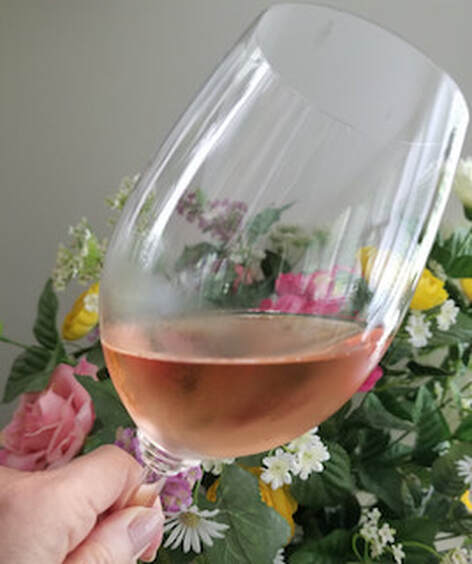
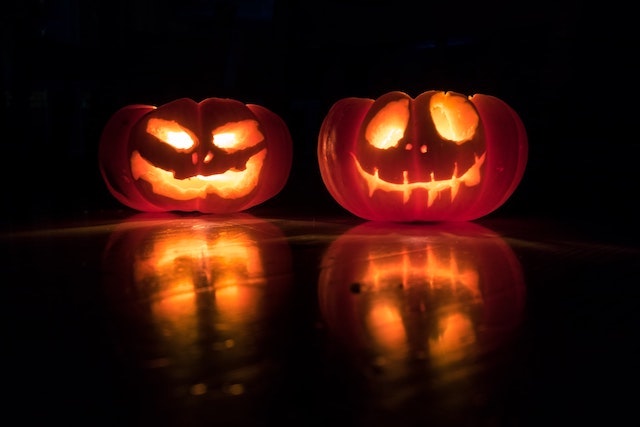
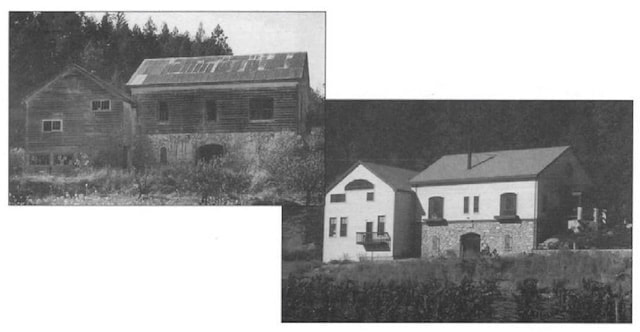
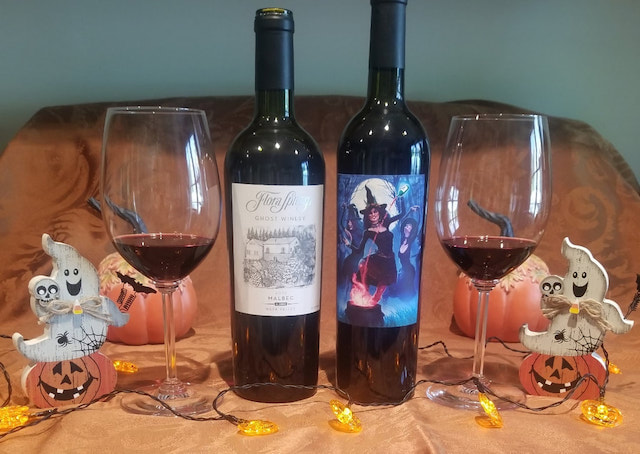


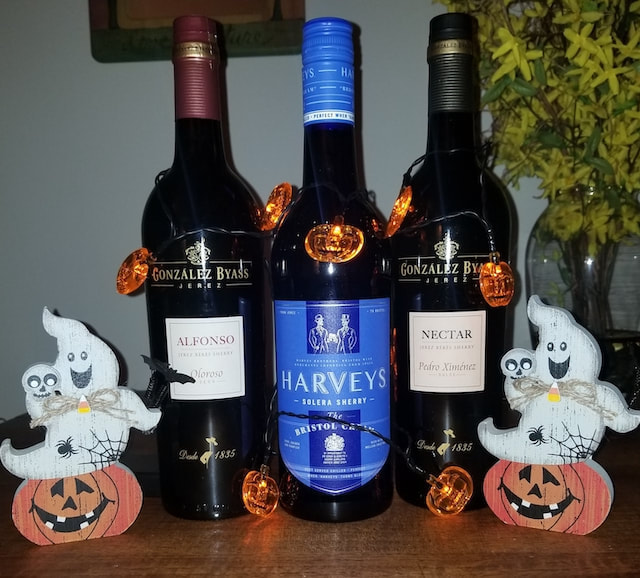
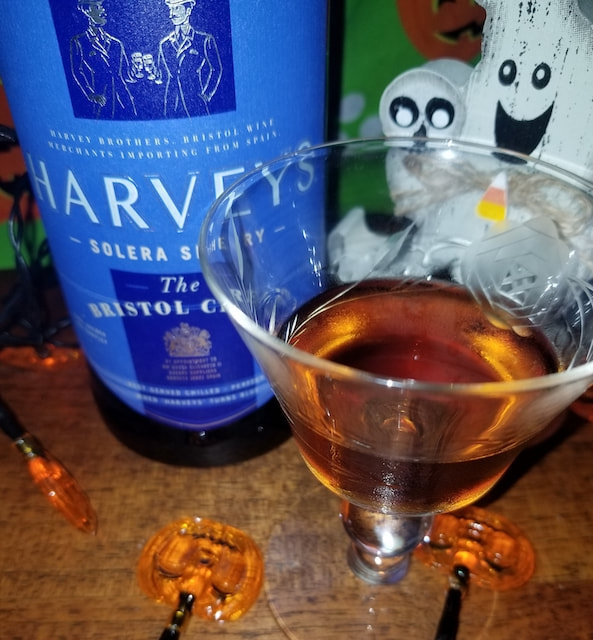
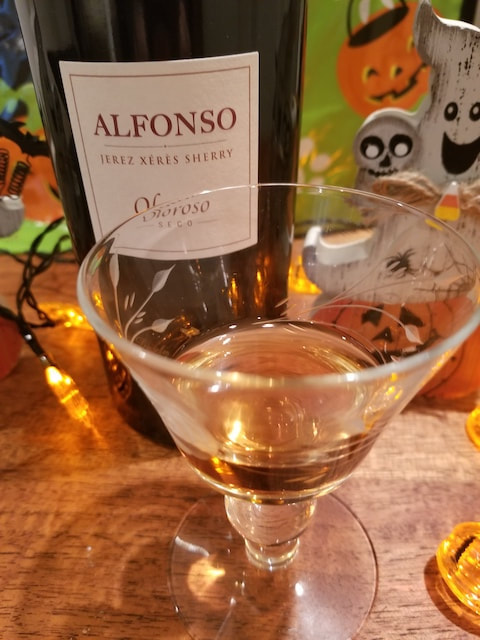

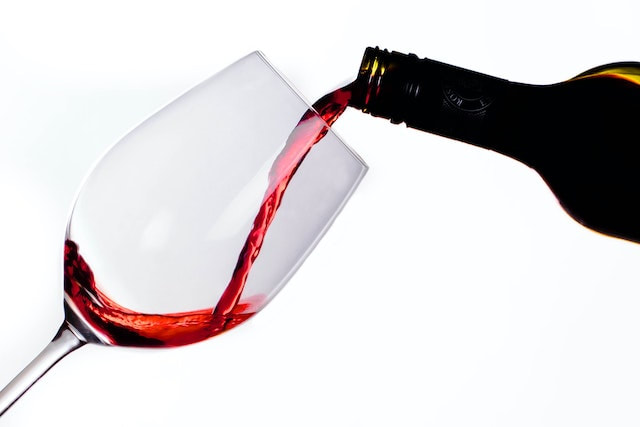
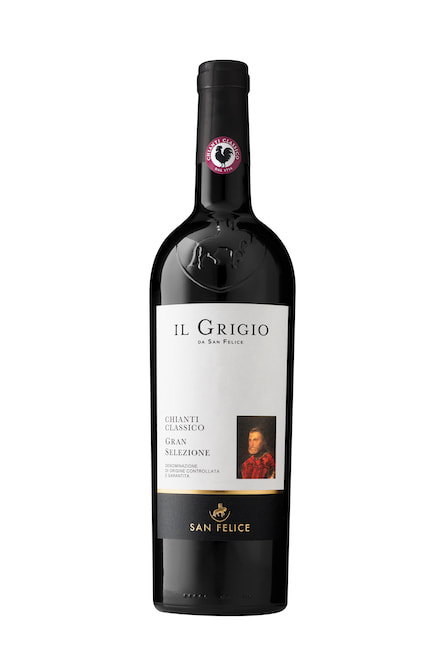
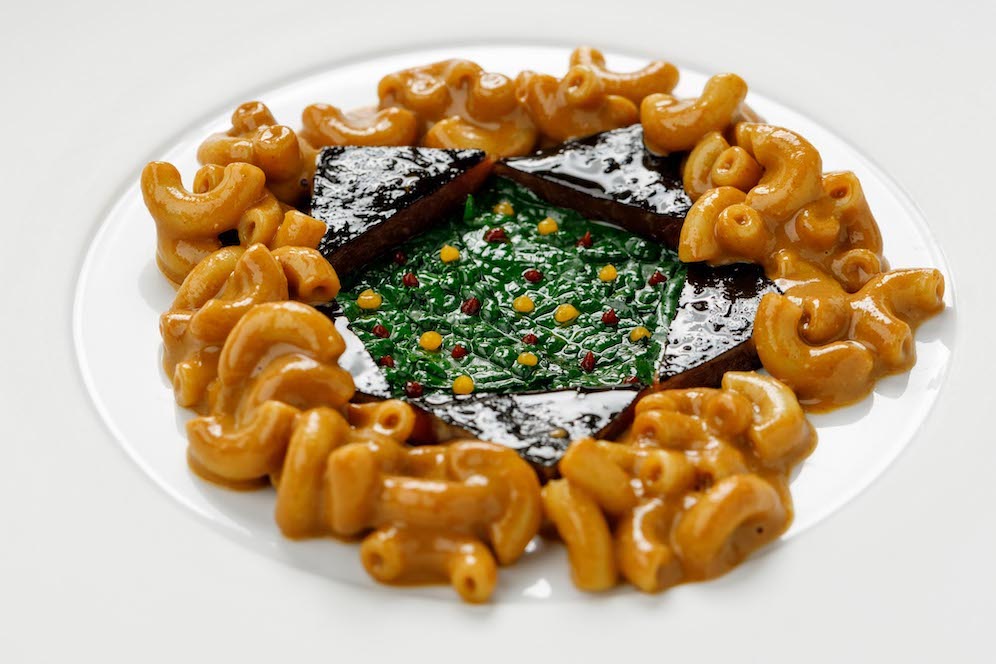

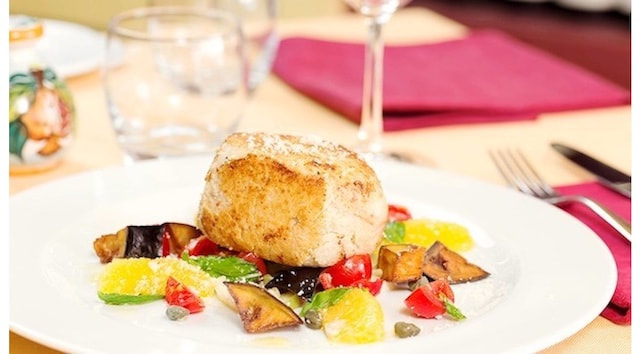
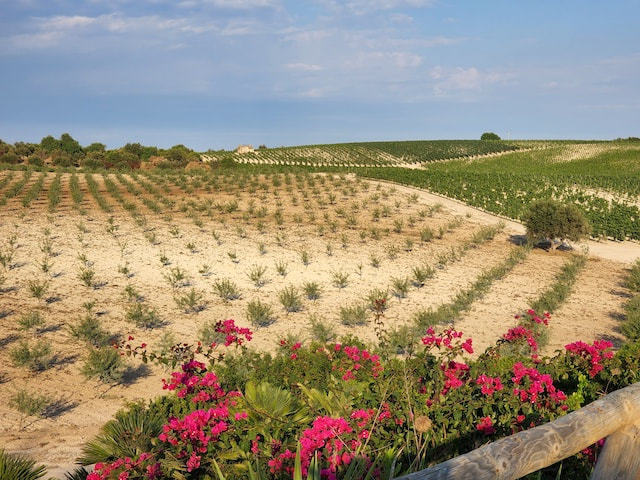
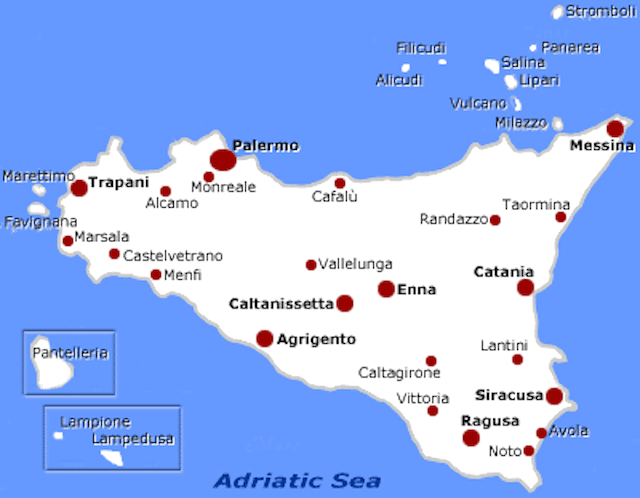
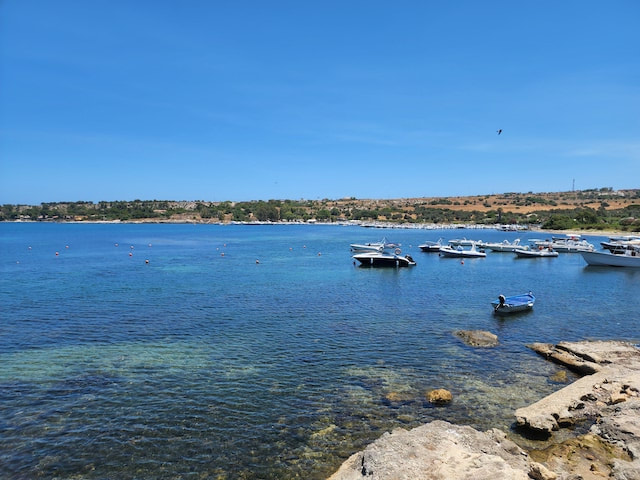
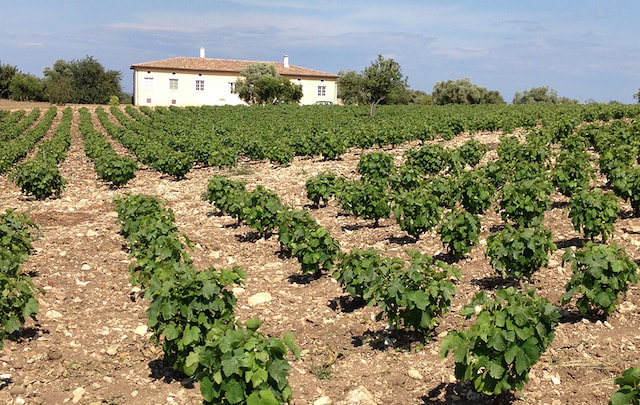
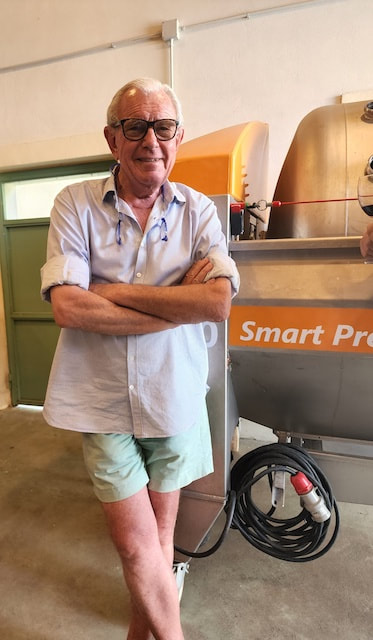

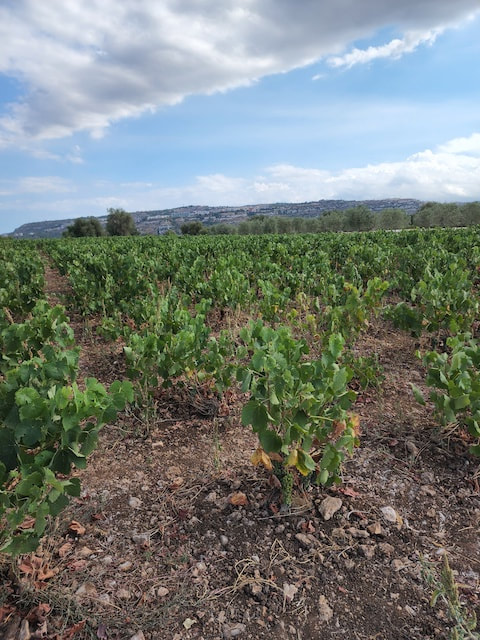
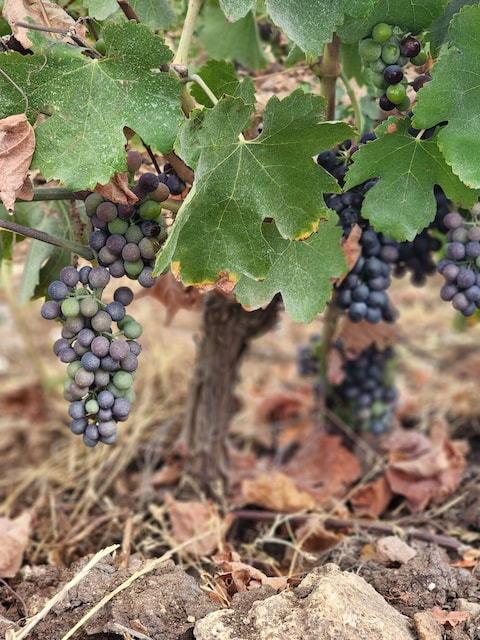
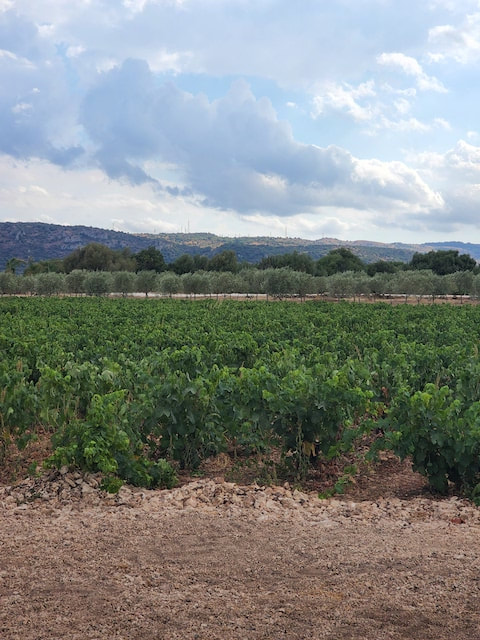
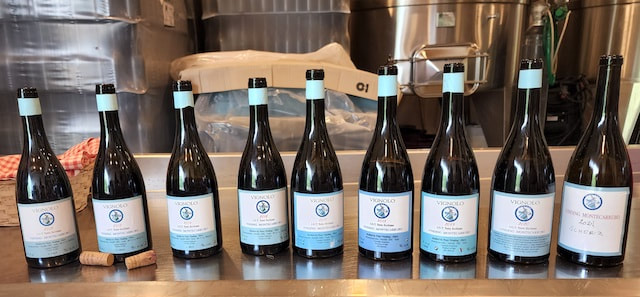
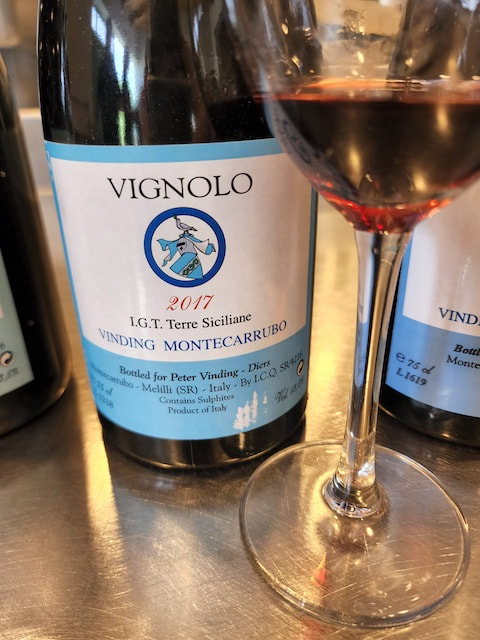
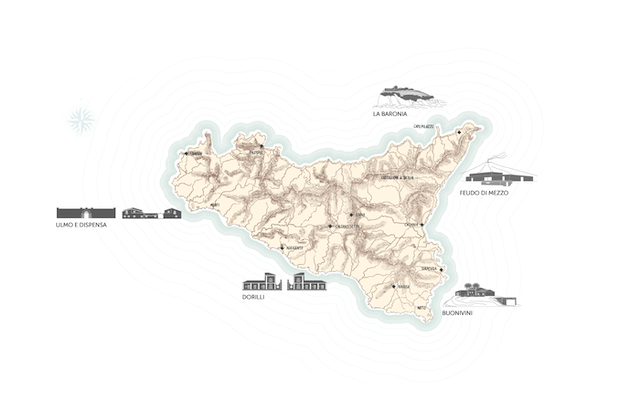

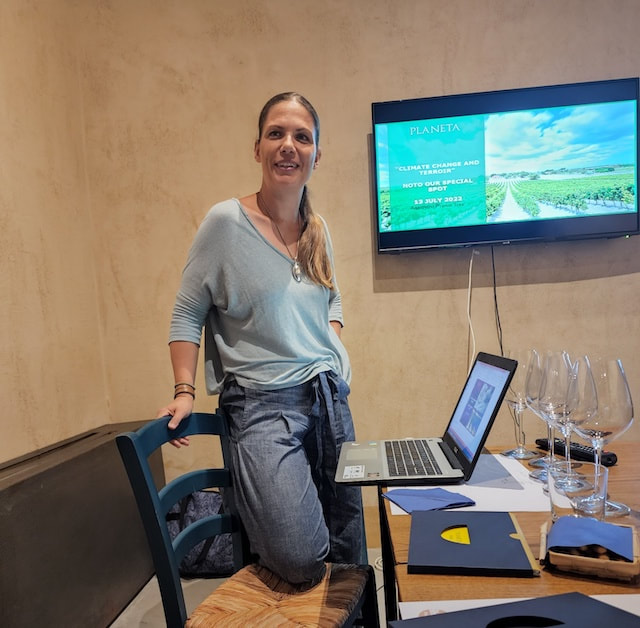
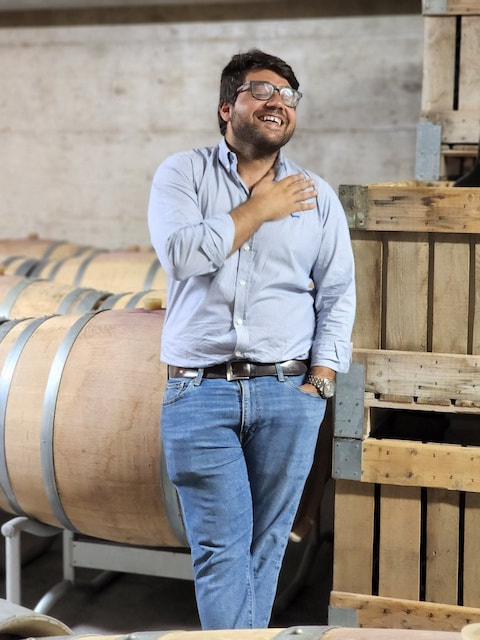
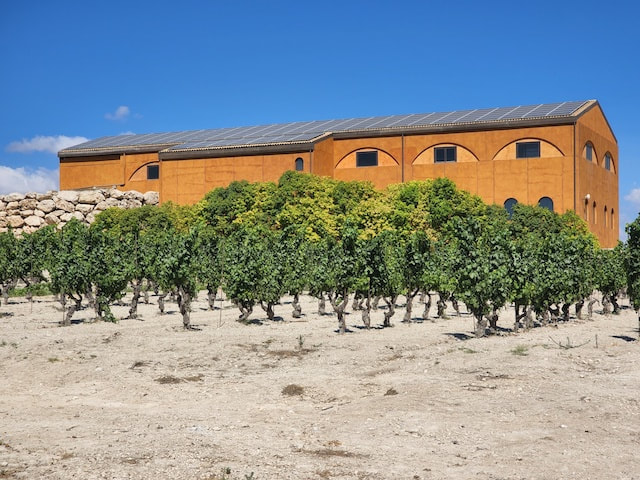
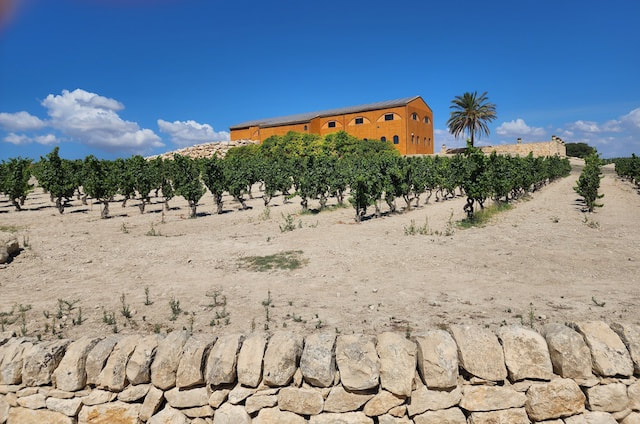
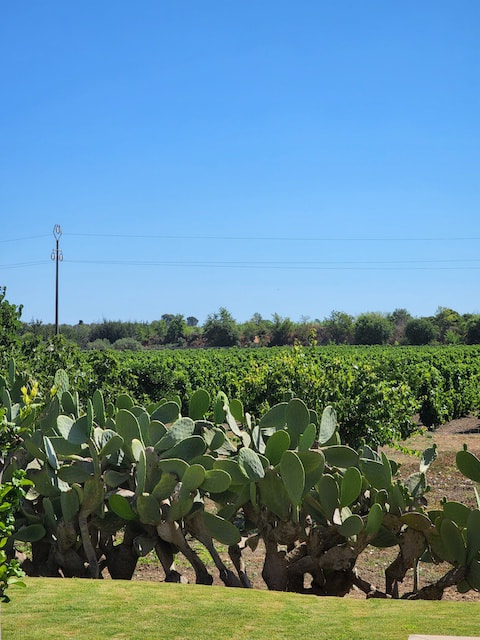
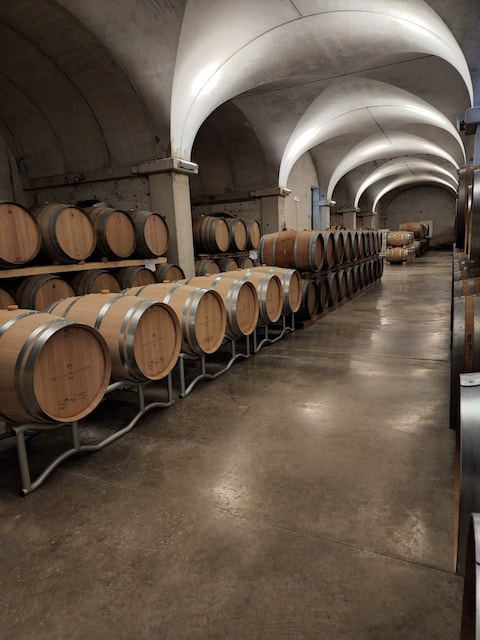
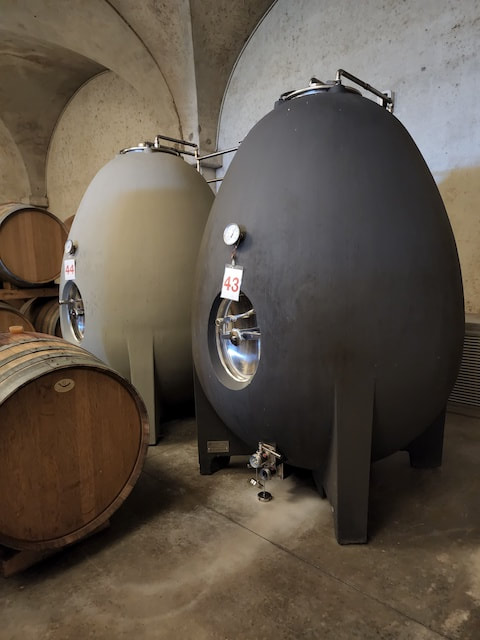
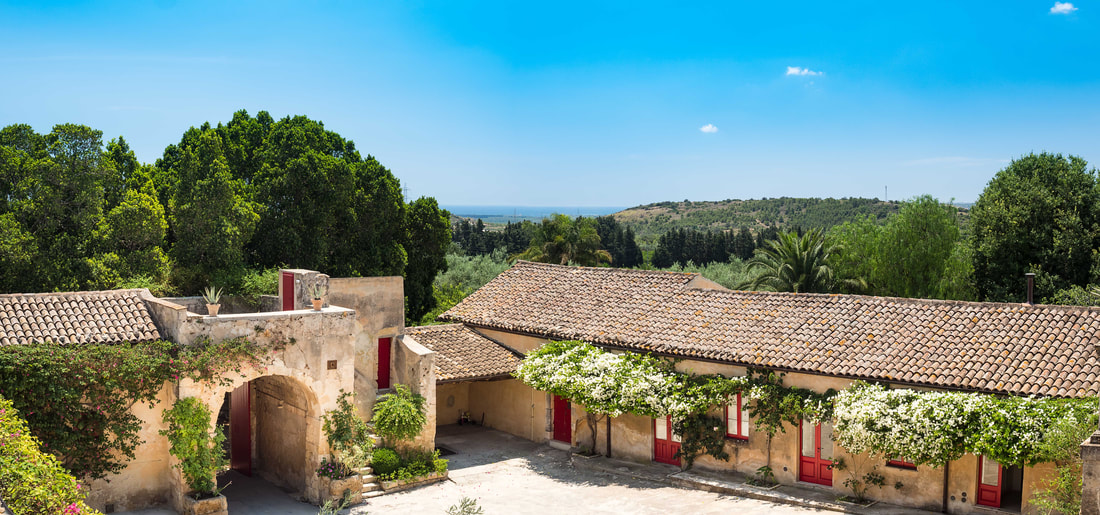
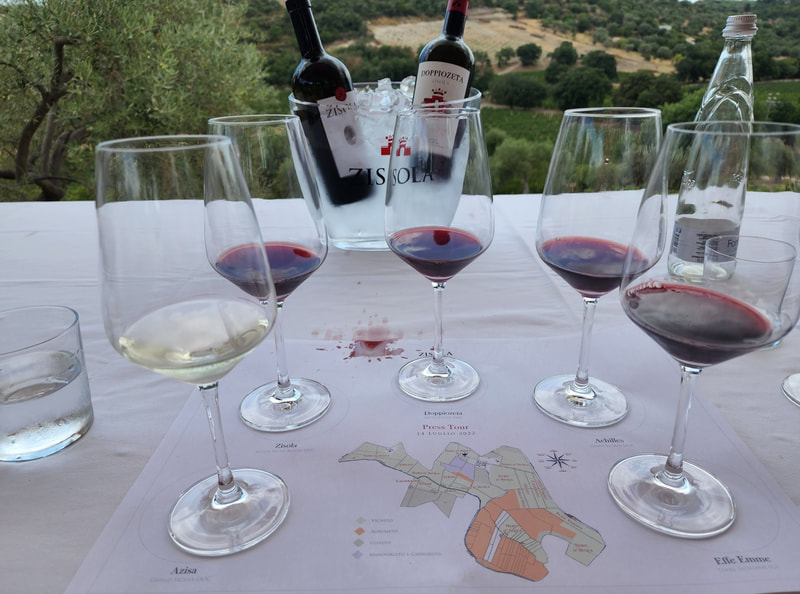

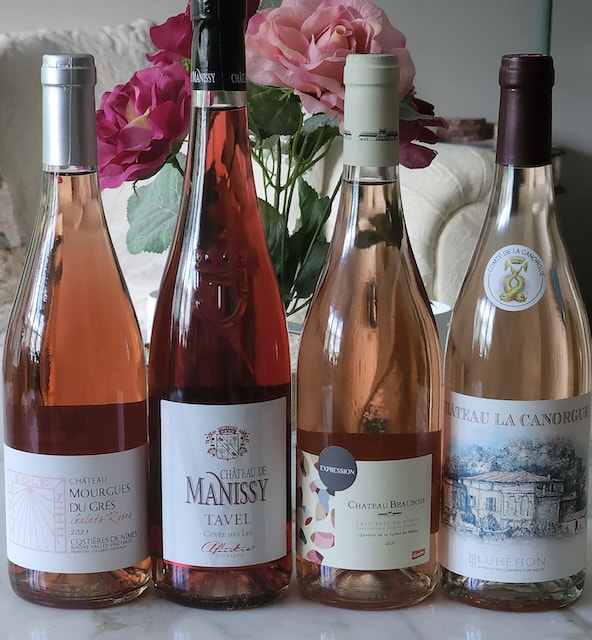
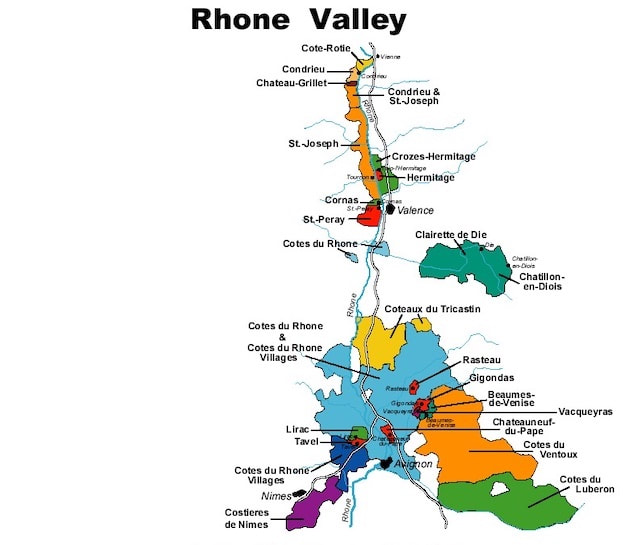


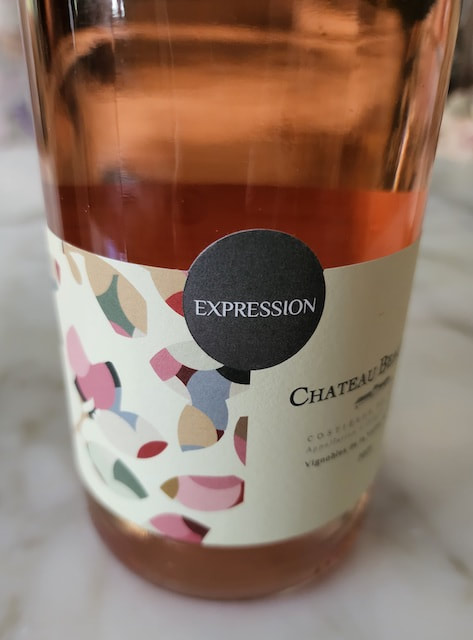
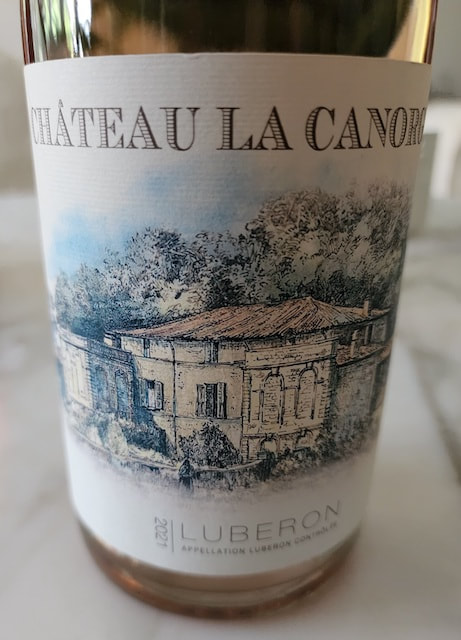


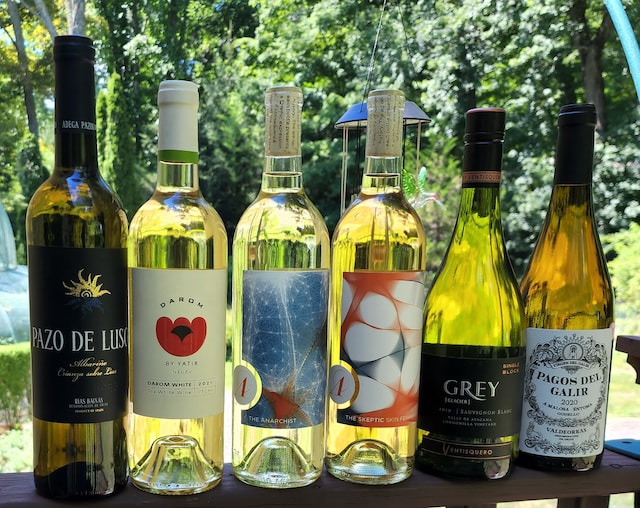

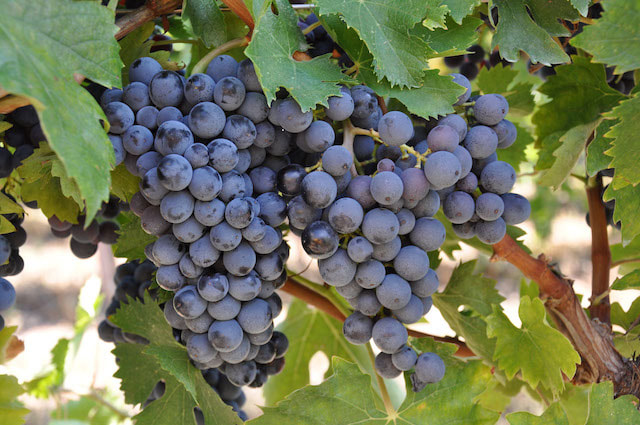
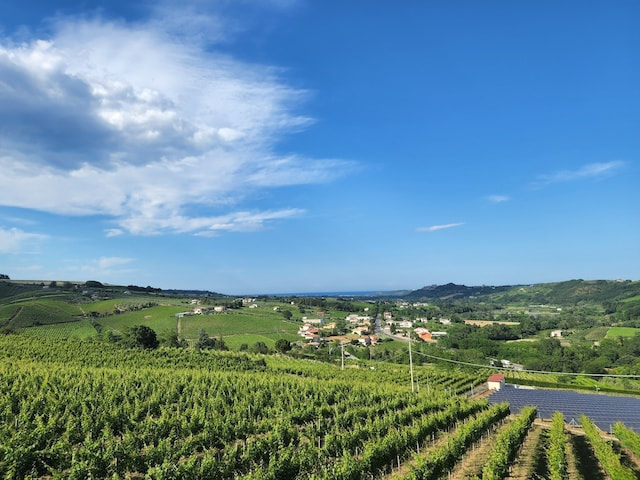
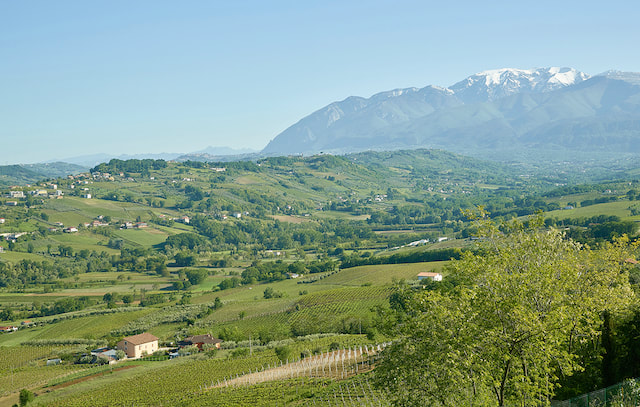
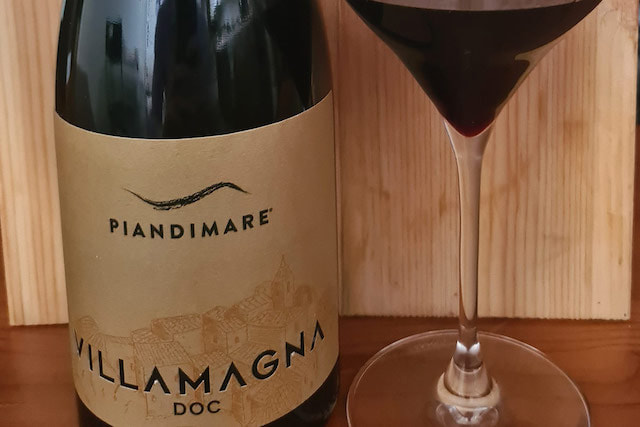
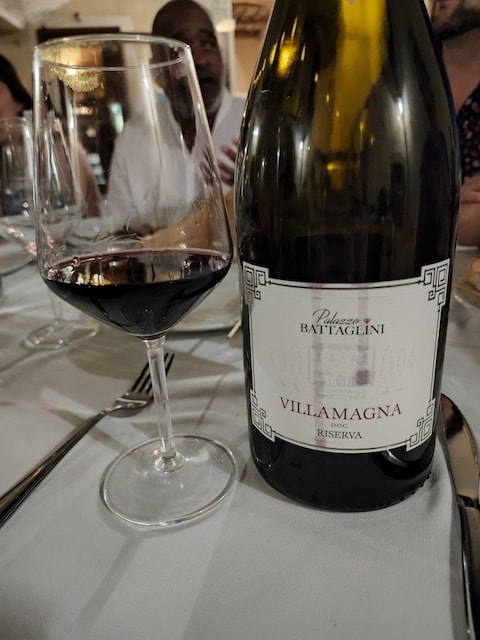


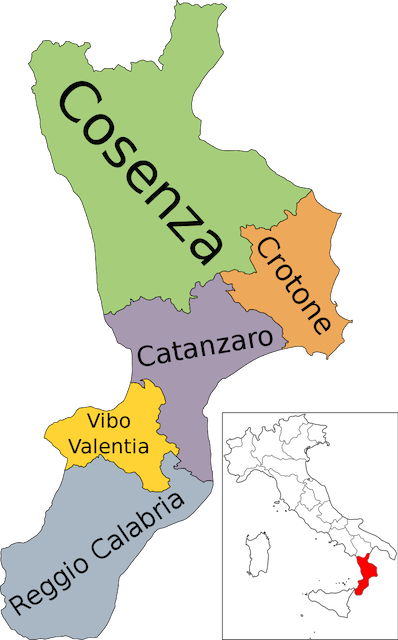
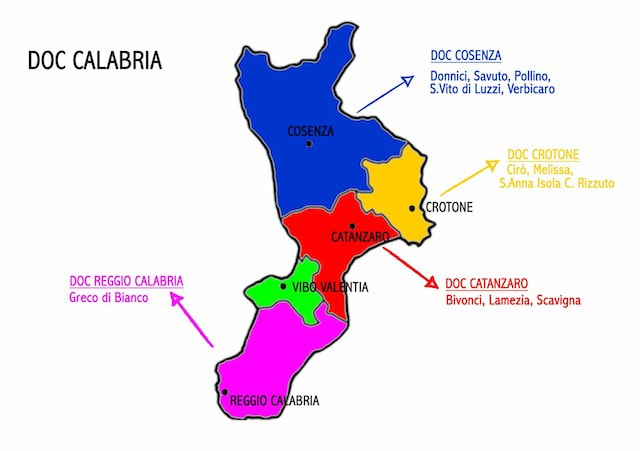
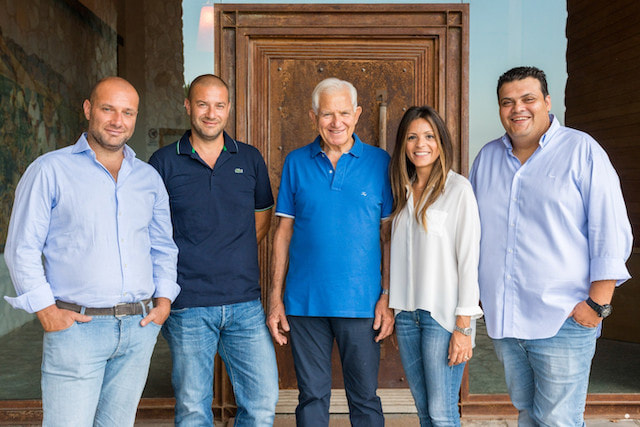
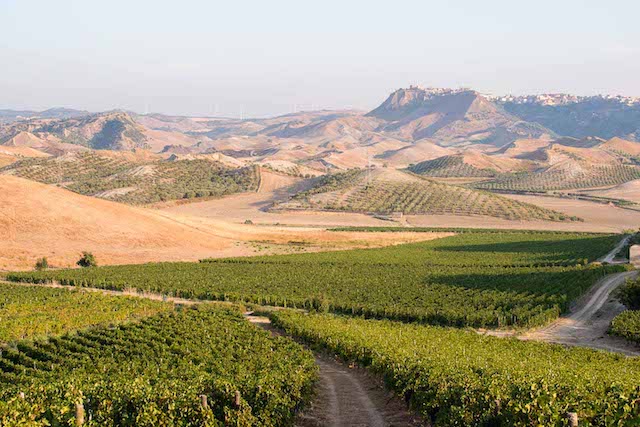


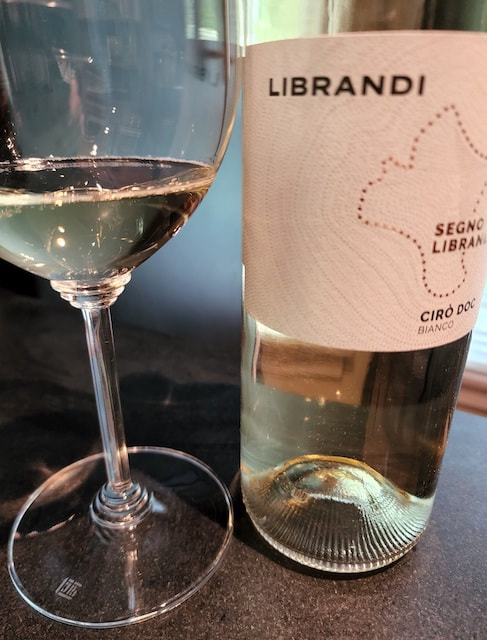
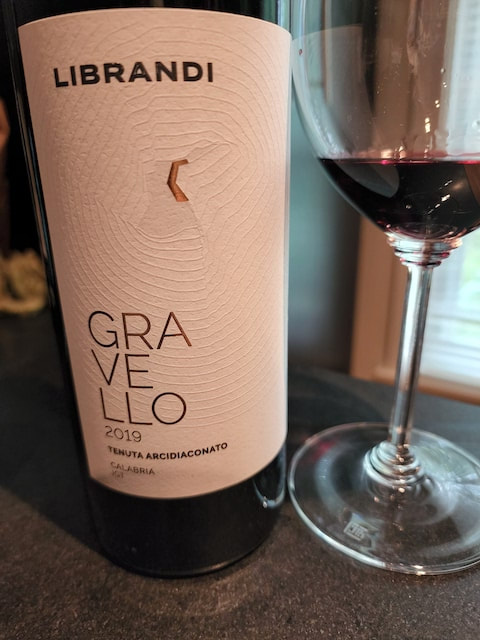
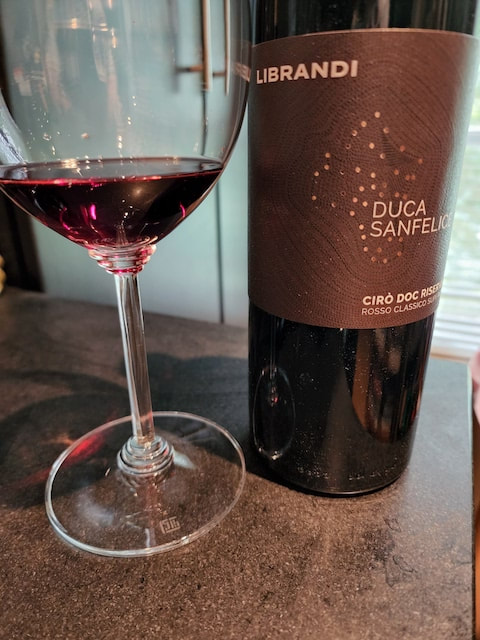
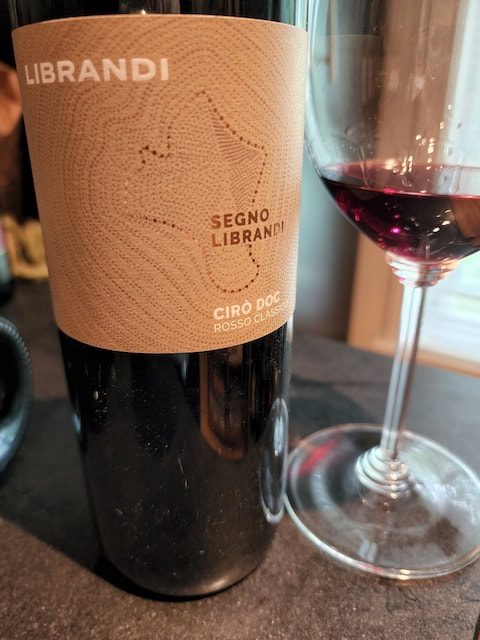
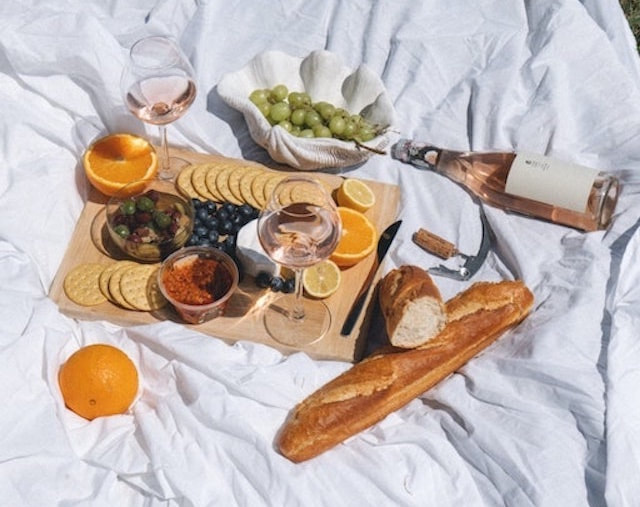
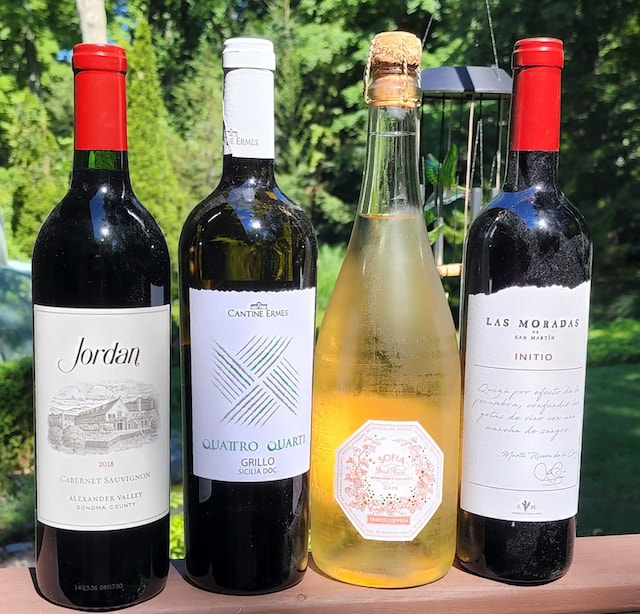
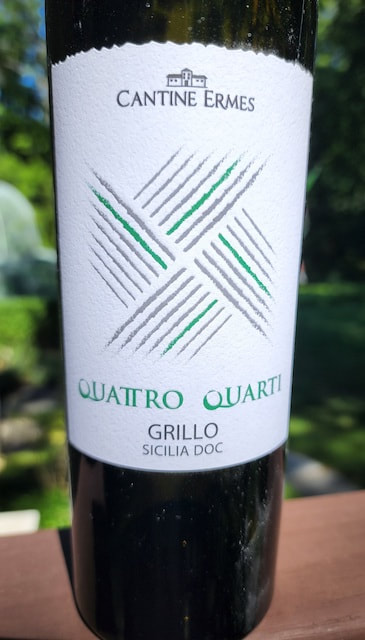
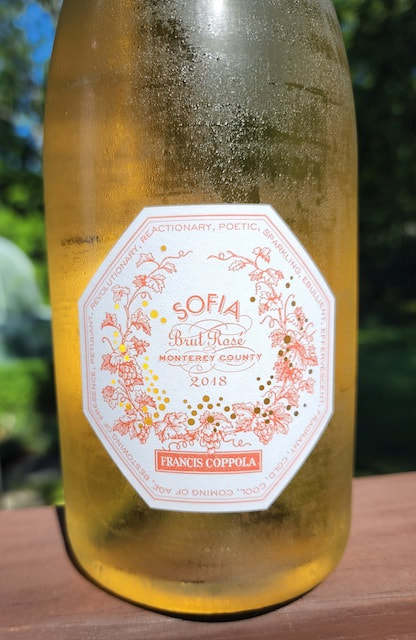
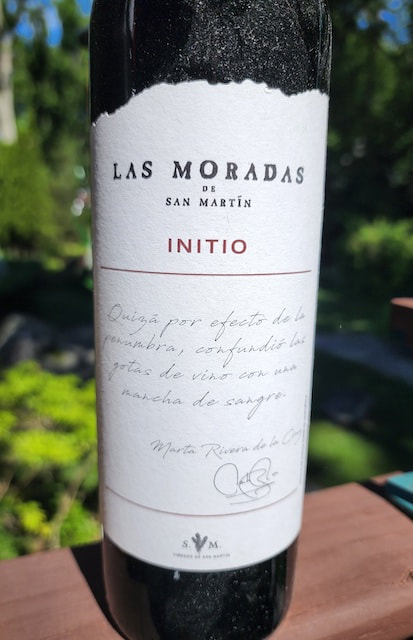
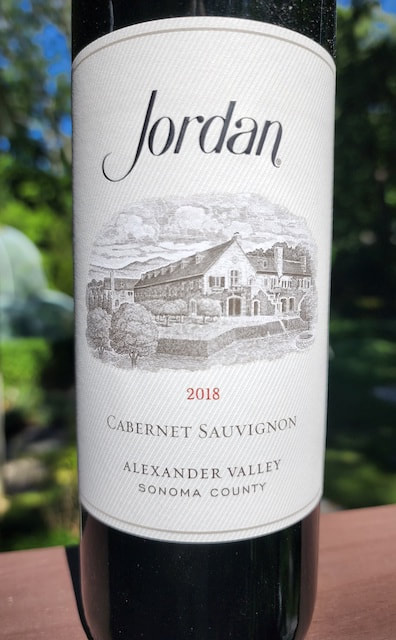


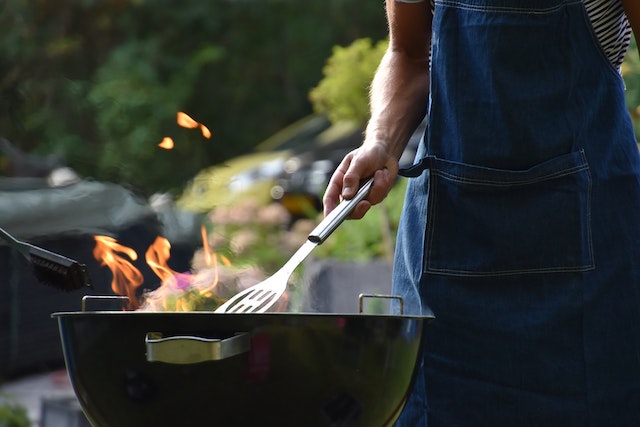
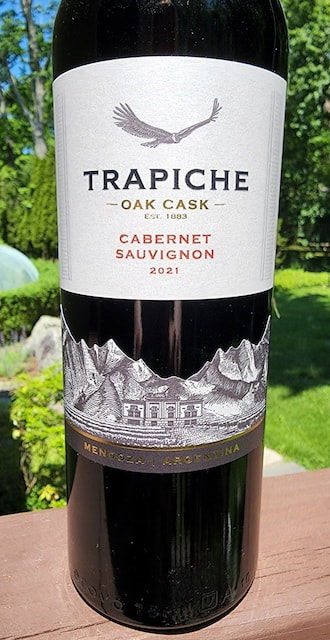
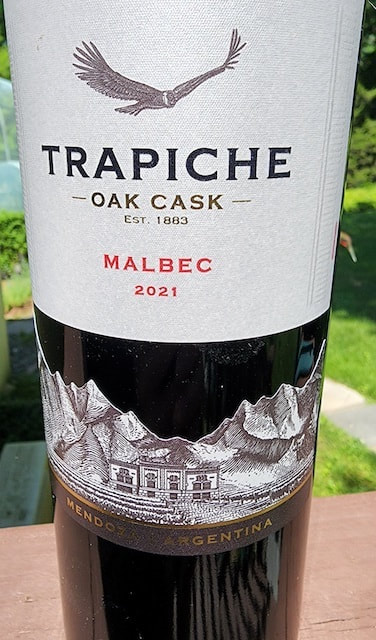
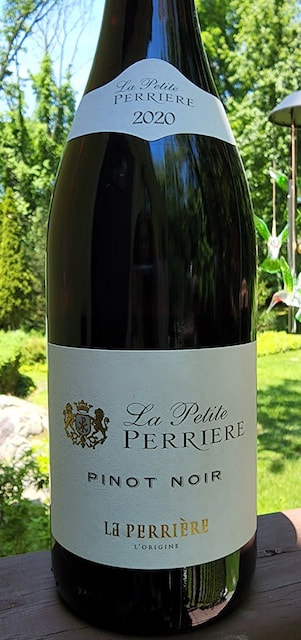
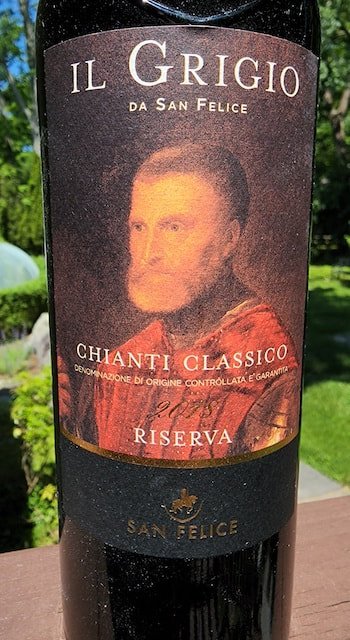

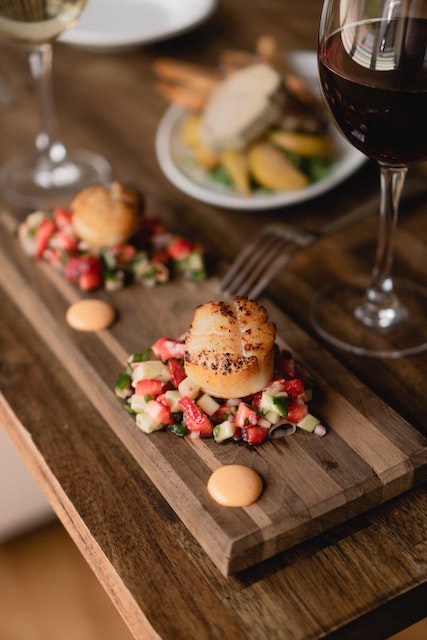
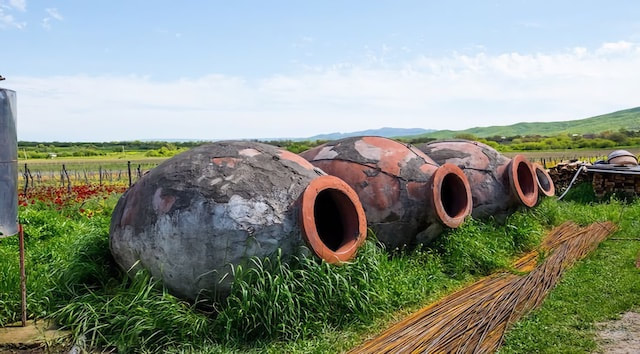
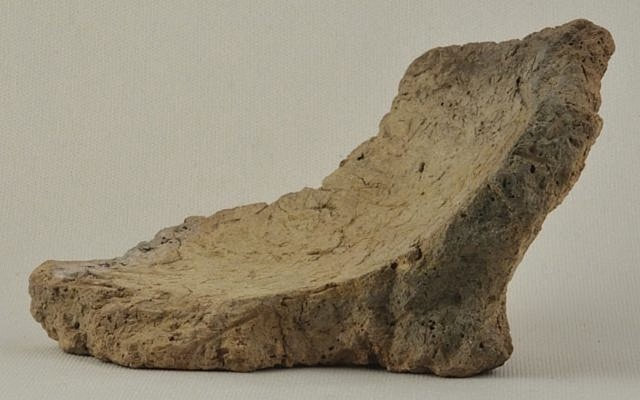
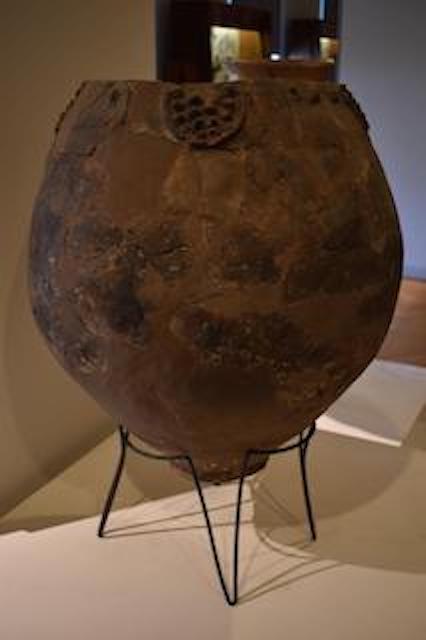
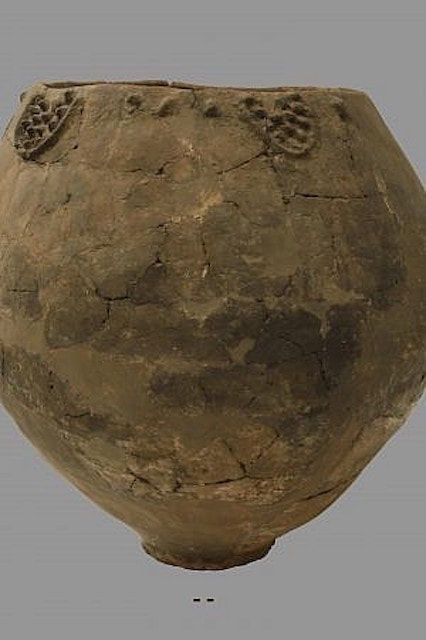
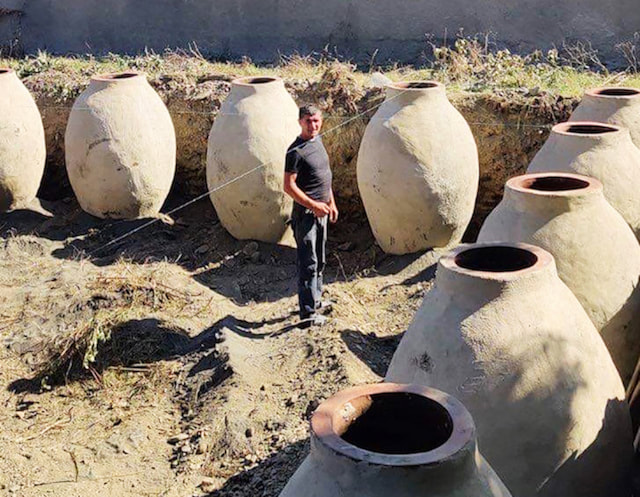
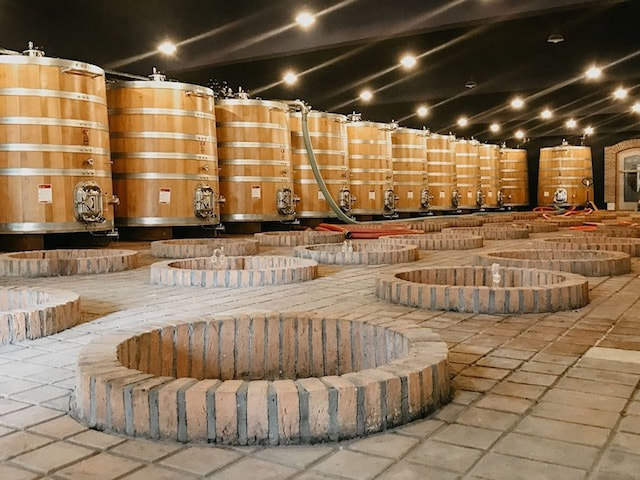

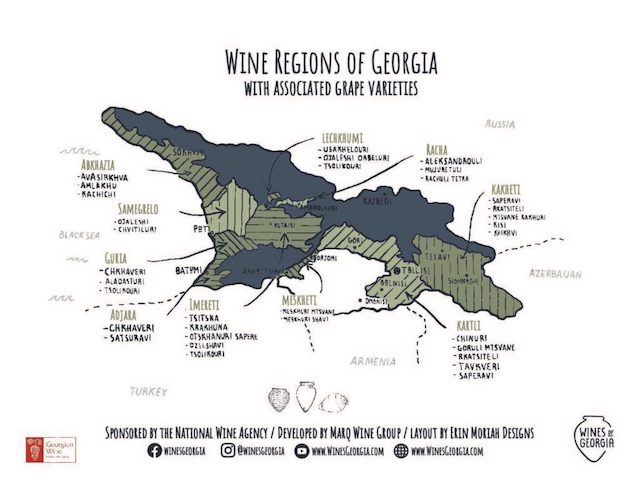
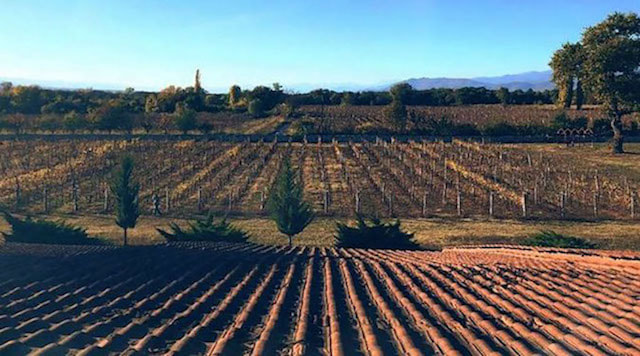

 RSS Feed
RSS Feed